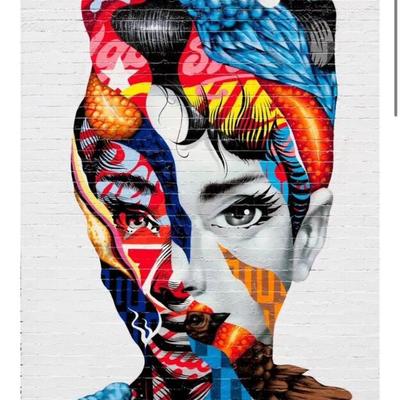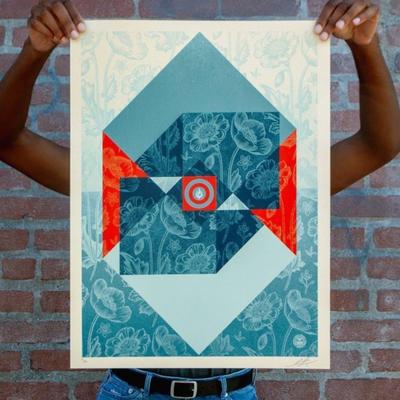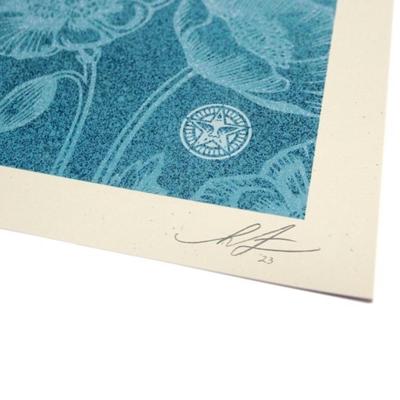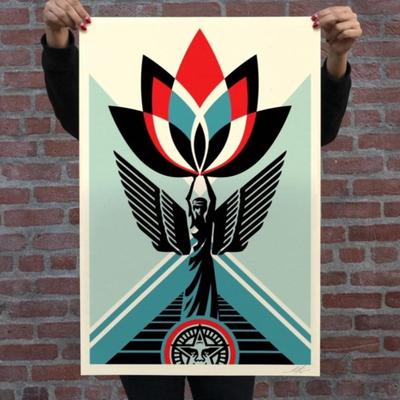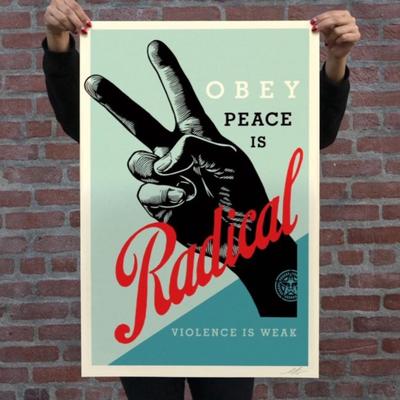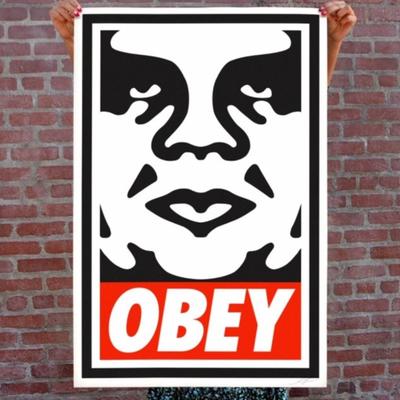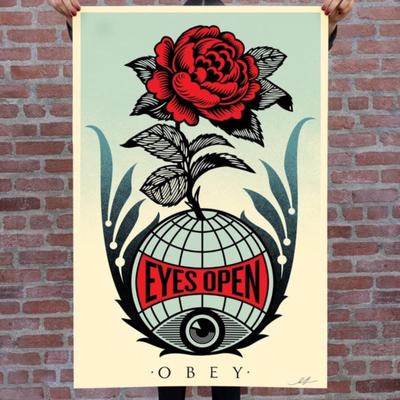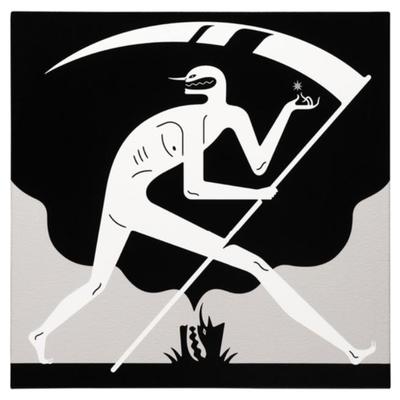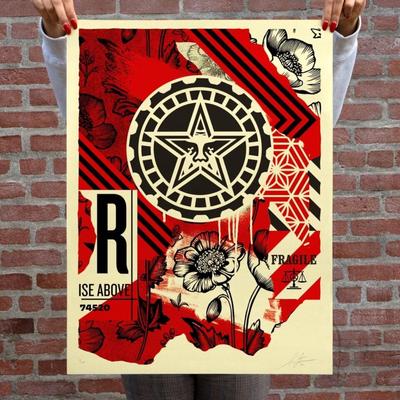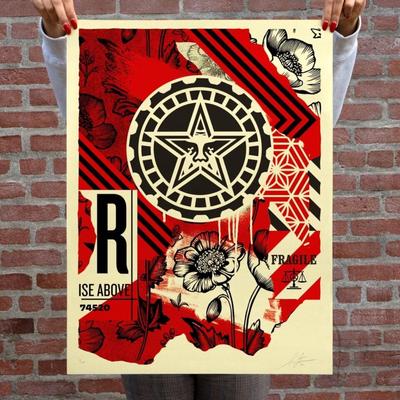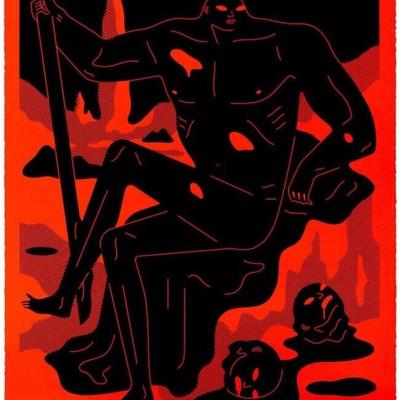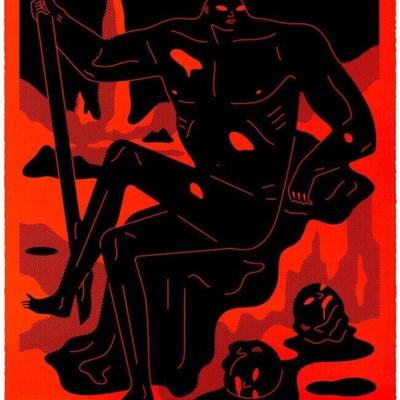-
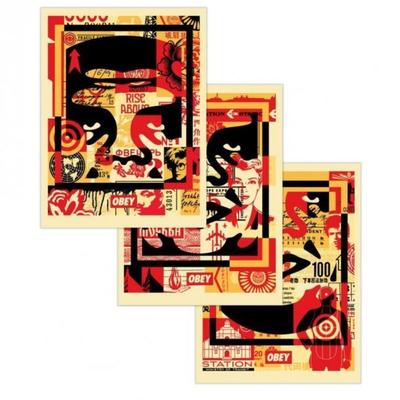
Artist: Shepard Fairey Title: OBEY 3-FACE COLLAGE Size: 18 X 24 inches Signed Offset Lithograph Set. Offset lithograph set of 3 prints on cream Speckle Tone paper. Each print signed by Shepard Fairey. Expanding on the legacies of artists such as Keith Haring and Andy Warhol, Shepard Faireys practice disrupts the distinction between fine and commercial art. A major artist of the street art movement, Fairey rose to prominence in the early 1990s through the dispersion of posters, stickers, and murals, related to his Obey Giant campaign, which yielded an international cultural phenomenon. Faireys iconic poster of President Barack Obama was adopted as the official emblem associated with the presidential campaign and encapsulates a number of recurring concerns in the artists work, including propaganda, portraiture, and political power. 1 / 776 -
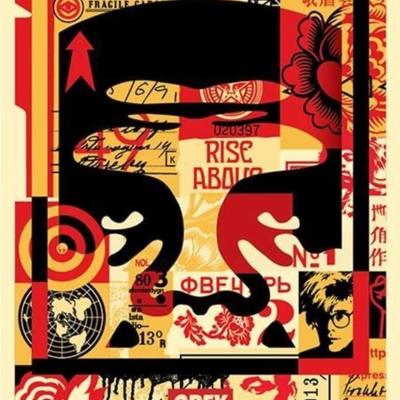
Artist: Shepard Fairey Title: OBEY 3-FACE COLLAGE Size: 18 X 24 inches Signed Offset Lithograph Set. Offset lithograph set of 3 prints on cream Speckle Tone paper. Each print signed by Shepard Fairey. Expanding on the legacies of artists such as Keith Haring and Andy Warhol, Shepard Faireys practice disrupts the distinction between fine and commercial art. A major artist of the street art movement, Fairey rose to prominence in the early 1990s through the dispersion of posters, stickers, and murals, related to his Obey Giant campaign, which yielded an international cultural phenomenon. Faireys iconic poster of President Barack Obama was adopted as the official emblem associated with the presidential campaign and encapsulates a number of recurring concerns in the artists work, including propaganda, portraiture, and political power. 2 / 776 -
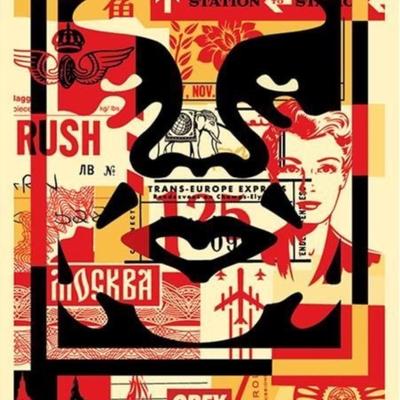
Artist: Shepard Fairey Title: OBEY 3-FACE COLLAGE Size: 18 X 24 inches Signed Offset Lithograph Set. Offset lithograph set of 3 prints on cream Speckle Tone paper. Each print signed by Shepard Fairey. Expanding on the legacies of artists such as Keith Haring and Andy Warhol, Shepard Faireys practice disrupts the distinction between fine and commercial art. A major artist of the street art movement, Fairey rose to prominence in the early 1990s through the dispersion of posters, stickers, and murals, related to his Obey Giant campaign, which yielded an international cultural phenomenon. Faireys iconic poster of President Barack Obama was adopted as the official emblem associated with the presidential campaign and encapsulates a number of recurring concerns in the artists work, including propaganda, portraiture, and political power. 3 / 776 -
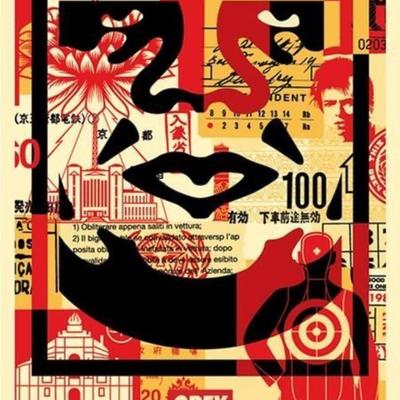
Artist: Shepard Fairey Title: OBEY 3-FACE COLLAGE Size: 18 X 24 inches Signed Offset Lithograph Set. Offset lithograph set of 3 prints on cream Speckle Tone paper. Each print signed by Shepard Fairey. Expanding on the legacies of artists such as Keith Haring and Andy Warhol, Shepard Faireys practice disrupts the distinction between fine and commercial art. A major artist of the street art movement, Fairey rose to prominence in the early 1990s through the dispersion of posters, stickers, and murals, related to his Obey Giant campaign, which yielded an international cultural phenomenon. Faireys iconic poster of President Barack Obama was adopted as the official emblem associated with the presidential campaign and encapsulates a number of recurring concerns in the artists work, including propaganda, portraiture, and political power. 4 / 776 -

Artist: Shepard Fairey Title: OBEY 3-FACE COLLAGE Size: 18 X 24 inches Signed Offset Lithograph Set. Offset lithograph set of 3 prints on cream Speckle Tone paper. Each print signed by Shepard Fairey. Expanding on the legacies of artists such as Keith Haring and Andy Warhol, Shepard Faireys practice disrupts the distinction between fine and commercial art. A major artist of the street art movement, Fairey rose to prominence in the early 1990s through the dispersion of posters, stickers, and murals, related to his Obey Giant campaign, which yielded an international cultural phenomenon. Faireys iconic poster of President Barack Obama was adopted as the official emblem associated with the presidential campaign and encapsulates a number of recurring concerns in the artists work, including propaganda, portraiture, and political power. 5 / 776 -
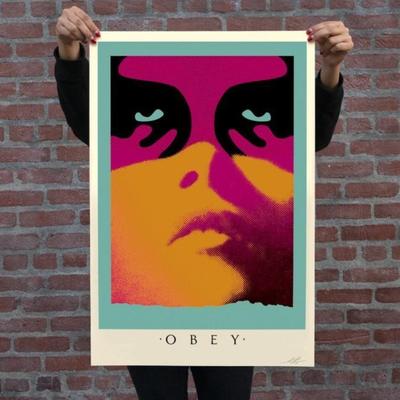
Artist: Shepard Fairey Title: Shadowplay 24 x 36 inches Offset on thick cream Speckletone paper. Signed by Shepard Fairey. Expanding on the legacies of artists such as Keith Haring and Andy Warhol, Shepard Faireys practice disrupts the distinction between fine and commercial art. A major artist of the street art movement, Fairey rose to prominence in the early 1990s through the dispersion of posters, stickers, and murals, related to his Obey Giant campaign, which yielded an international cultural phenomenon. Faireys iconic poster of President Barack Obama was adopted as the official emblem associated with the presidential campaign and encapsulates a number of recurring concerns in the artists work, including propaganda, portraiture, and political power. 6 / 776 -
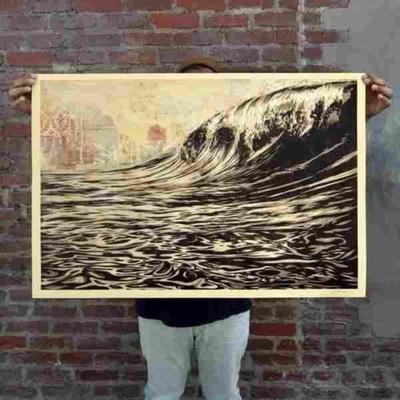
Artist: Shepard Fairey Title: DARK WAVE SIGNED OFFSET LITHOGRAPH 24 x 36 inches. Offset Lithograph on thick cream Speckle Tone paper. Signed by Shepard Fairey. Note from Artist: I first illustrated the Dark Wave piece in 2010 as a response to the BP spill in the Gulf of Mexico. I made some fine art pieces of the image that I liked even more than the screen prints and decided Id like to release an offset of the fine art version. I am releasing this both because I like the image, and because unfortunately, the environmental hazards of off-shore drilling are just as relevant today as they were in 2010, especially with the relaxed regulations under the new administration. I enjoy doing illustrations of water with its hypnotic ripples and reflections. Theres oil in this water, which mixes ok in an illustration, but not so well in real life. I want future generations to inhabit a livable planet. 7 / 776 -

Artist: Shepard Fairey Title: DARK WAVE SIGNED OFFSET LITHOGRAPH 24 x 36 inches. Offset Lithograph on thick cream Speckle Tone paper. Signed by Shepard Fairey. Note from Artist: I first illustrated the Dark Wave piece in 2010 as a response to the BP spill in the Gulf of Mexico. I made some fine art pieces of the image that I liked even more than the screen prints and decided Id like to release an offset of the fine art version. I am releasing this both because I like the image, and because unfortunately, the environmental hazards of off-shore drilling are just as relevant today as they were in 2010, especially with the relaxed regulations under the new administration. I enjoy doing illustrations of water with its hypnotic ripples and reflections. Theres oil in this water, which mixes ok in an illustration, but not so well in real life. I want future generations to inhabit a livable planet. 8 / 776 -

Artist: Shepard Fairey Title: DARK WAVE SIGNED OFFSET LITHOGRAPH 24 x 36 inches. Offset Lithograph on thick cream Speckle Tone paper. Signed by Shepard Fairey. Note from Artist: I first illustrated the Dark Wave piece in 2010 as a response to the BP spill in the Gulf of Mexico. I made some fine art pieces of the image that I liked even more than the screen prints and decided Id like to release an offset of the fine art version. I am releasing this both because I like the image, and because unfortunately, the environmental hazards of off-shore drilling are just as relevant today as they were in 2010, especially with the relaxed regulations under the new administration. I enjoy doing illustrations of water with its hypnotic ripples and reflections. Theres oil in this water, which mixes ok in an illustration, but not so well in real life. I want future generations to inhabit a livable planet. 9 / 776 -
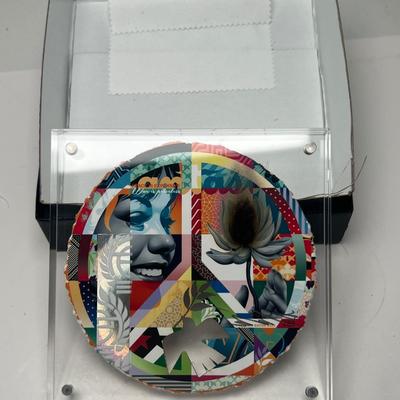
Size: 5†x 5†Medium: Gyclee on Sigma Smooth 300gsm cotton rag paper with holographic foil, spray paint, laser etching, unique serial number, silver embossed seal, custom burn damage and signed by the artist. Comes inside magnetic plexiglas casing. Edition: Timed Release with a reserve amount of 600pcs. This project is a follow up to Eaton’s 2022 ’Slices’ project which explored the notion of ‘art as currency’. Each print in the ‘PEACE UNDER FIRE’ collection represents a fractional ownership of the painting of the same name. Mimicking a Fort Knox model, the currency’s value is backed by the actual painting which is kept in perpetual, temperature controlled storage in Los Angeles, CA. Every year the painting will be re-appraised and the new price will be posted publicly thus affecting the value of the currency. This particular collection will be raising funds for [link removed by eBay]. 12 / 776 -
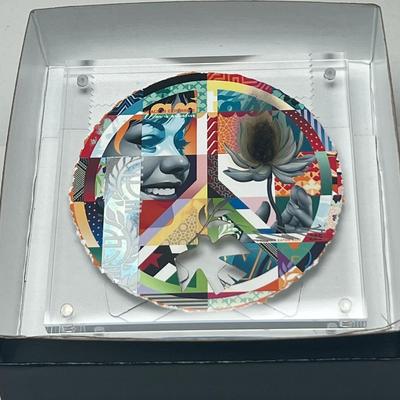
Size: 5†x 5†Medium: Gyclee on Sigma Smooth 300gsm cotton rag paper with holographic foil, spray paint, laser etching, unique serial number, silver embossed seal, custom burn damage and signed by the artist. Comes inside magnetic plexiglas casing. Edition: Timed Release with a reserve amount of 600pcs. This project is a follow up to Eaton’s 2022 ’Slices’ project which explored the notion of ‘art as currency’. Each print in the ‘PEACE UNDER FIRE’ collection represents a fractional ownership of the painting of the same name. Mimicking a Fort Knox model, the currency’s value is backed by the actual painting which is kept in perpetual, temperature controlled storage in Los Angeles, CA. Every year the painting will be re-appraised and the new price will be posted publicly thus affecting the value of the currency. This particular collection will be raising funds for [link removed by eBay]. 13 / 776 -
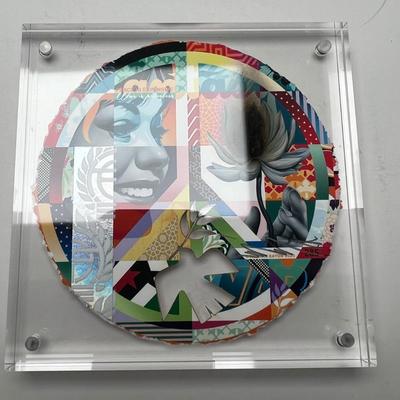
Size: 5†x 5†Medium: Gyclee on Sigma Smooth 300gsm cotton rag paper with holographic foil, spray paint, laser etching, unique serial number, silver embossed seal, custom burn damage and signed by the artist. Comes inside magnetic plexiglas casing. Edition: Timed Release with a reserve amount of 600pcs. This project is a follow up to Eaton’s 2022 ’Slices’ project which explored the notion of ‘art as currency’. Each print in the ‘PEACE UNDER FIRE’ collection represents a fractional ownership of the painting of the same name. Mimicking a Fort Knox model, the currency’s value is backed by the actual painting which is kept in perpetual, temperature controlled storage in Los Angeles, CA. Every year the painting will be re-appraised and the new price will be posted publicly thus affecting the value of the currency. This particular collection will be raising funds for [link removed by eBay]. 14 / 776 -
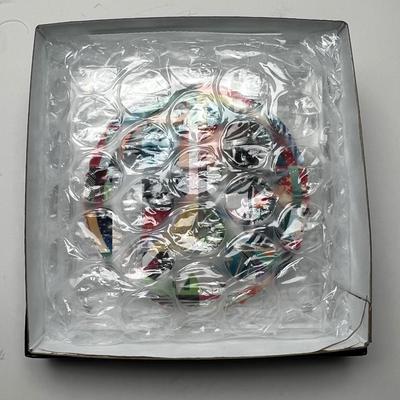
Size: 5†x 5†Medium: Gyclee on Sigma Smooth 300gsm cotton rag paper with holographic foil, spray paint, laser etching, unique serial number, silver embossed seal, custom burn damage and signed by the artist. Comes inside magnetic plexiglas casing. Edition: Timed Release with a reserve amount of 600pcs. This project is a follow up to Eaton’s 2022 ’Slices’ project which explored the notion of ‘art as currency’. Each print in the ‘PEACE UNDER FIRE’ collection represents a fractional ownership of the painting of the same name. Mimicking a Fort Knox model, the currency’s value is backed by the actual painting which is kept in perpetual, temperature controlled storage in Los Angeles, CA. Every year the painting will be re-appraised and the new price will be posted publicly thus affecting the value of the currency. This particular collection will be raising funds for [link removed by eBay]. 15 / 776 -
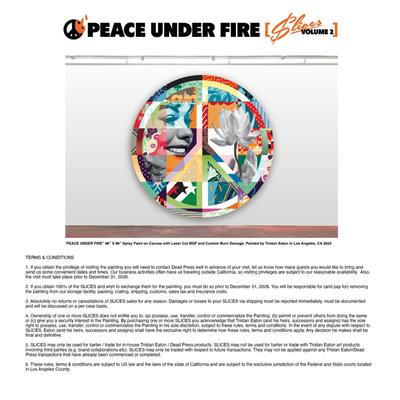
Size: 5†x 5†Medium: Gyclee on Sigma Smooth 300gsm cotton rag paper with holographic foil, spray paint, laser etching, unique serial number, silver embossed seal, custom burn damage and signed by the artist. Comes inside magnetic plexiglas casing. Edition: Timed Release with a reserve amount of 600pcs. This project is a follow up to Eaton’s 2022 ’Slices’ project which explored the notion of ‘art as currency’. Each print in the ‘PEACE UNDER FIRE’ collection represents a fractional ownership of the painting of the same name. Mimicking a Fort Knox model, the currency’s value is backed by the actual painting which is kept in perpetual, temperature controlled storage in Los Angeles, CA. Every year the painting will be re-appraised and the new price will be posted publicly thus affecting the value of the currency. This particular collection will be raising funds for [link removed by eBay]. 16 / 776 -

Size: 5†x 5†Medium: Gyclee on Sigma Smooth 300gsm cotton rag paper with holographic foil, spray paint, laser etching, unique serial number, silver embossed seal, custom burn damage and signed by the artist. Comes inside magnetic plexiglas casing. Edition: Timed Release with a reserve amount of 600pcs. This project is a follow up to Eaton’s 2022 ’Slices’ project which explored the notion of ‘art as currency’. Each print in the ‘PEACE UNDER FIRE’ collection represents a fractional ownership of the painting of the same name. Mimicking a Fort Knox model, the currency’s value is backed by the actual painting which is kept in perpetual, temperature controlled storage in Los Angeles, CA. Every year the painting will be re-appraised and the new price will be posted publicly thus affecting the value of the currency. This particular collection will be raising funds for [link removed by eBay]. 17 / 776 -
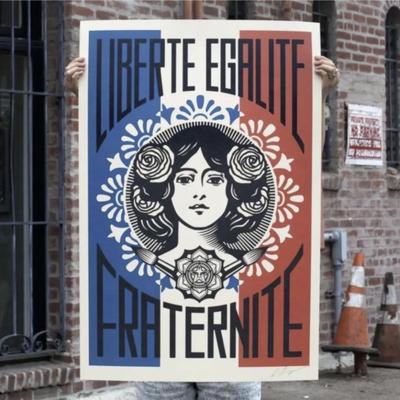
Shepard Fairey - Liberte, Egalite, Fraternite Silkscreen/Serigraph - Signed 61 x 91 cm (36 x 24 inch) offset print on cream Speckle Tone paper. Signed & Dated by Shepard Fairey. Mint condition. I created the Liberte, Egalite, Fraternite art piece to show support for France after the Nov. 13, 2015 terror attacks which happened just before the time of my Earth Crisis installation at the Eiffel Tower. The piece was very important to me as a symbol of unity during a dark, tragic moment. I was moved that the art and the message was inspiring for so many people in France, and beyond, and it has remained one of my most requested images since it was first created. Im excited to be releasing it now as an open edition offset print, accessible for all. 18 / 776 -
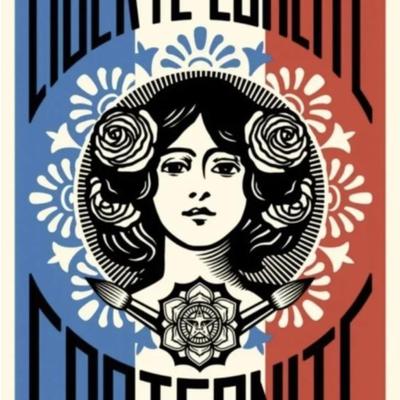
Shepard Fairey - Liberte, Egalite, Fraternite Silkscreen/Serigraph - Signed 61 x 91 cm (36 x 24 inch) offset print on cream Speckle Tone paper. Signed & Dated by Shepard Fairey. Mint condition. I created the Liberte, Egalite, Fraternite art piece to show support for France after the Nov. 13, 2015 terror attacks which happened just before the time of my Earth Crisis installation at the Eiffel Tower. The piece was very important to me as a symbol of unity during a dark, tragic moment. I was moved that the art and the message was inspiring for so many people in France, and beyond, and it has remained one of my most requested images since it was first created. Im excited to be releasing it now as an open edition offset print, accessible for all. 19 / 776 -

Shepard Fairey - Liberte, Egalite, Fraternite Silkscreen/Serigraph - Signed 61 x 91 cm (36 x 24 inch) offset print on cream Speckle Tone paper. Signed & Dated by Shepard Fairey. Mint condition. I created the Liberte, Egalite, Fraternite art piece to show support for France after the Nov. 13, 2015 terror attacks which happened just before the time of my Earth Crisis installation at the Eiffel Tower. The piece was very important to me as a symbol of unity during a dark, tragic moment. I was moved that the art and the message was inspiring for so many people in France, and beyond, and it has remained one of my most requested images since it was first created. Im excited to be releasing it now as an open edition offset print, accessible for all. 20 / 776 -
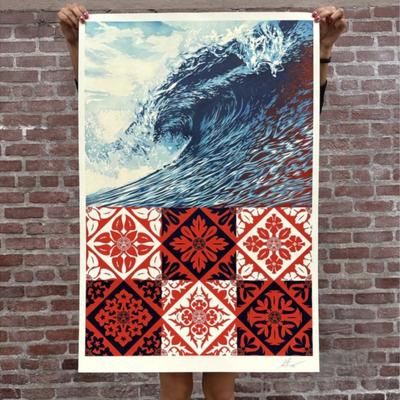
Artist: Shepard Fairey Title: WAVE OF DISTRESS SIGNED OFFSET LITHOGRAPH 24 x 36 inches. Offset Lithograph on thick cream Speckle Tone paper. Signed by Shepard Fairey. Note from Artist: I first illustrated the Dark Wave piece in 2010 as a response to the BP spill in the Gulf of Mexico. I made some fine art pieces of the image that I liked even more than the screen prints and decided Id like to release an offset of the fine art version. I am releasing this both because I like the image, and because unfortunately, the environmental hazards of off-shore drilling are just as relevant today as they were in 2010, especially with the relaxed regulations under the new administration. I enjoy doing illustrations of water with its hypnotic ripples and reflections. Theres oil in this water, which mixes ok in an illustration, but not so well in real life. I want future generations to inhabit a livable planet. 21 / 776 -
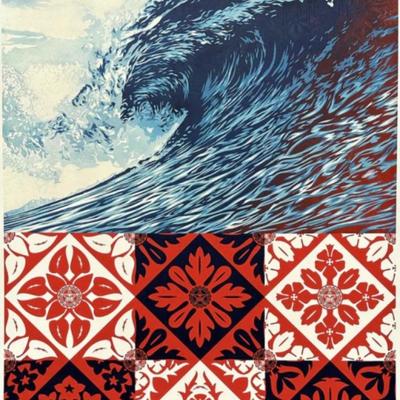
Artist: Shepard Fairey Title: WAVE OF DISTRESS SIGNED OFFSET LITHOGRAPH 24 x 36 inches. Offset Lithograph on thick cream Speckle Tone paper. Signed by Shepard Fairey. Note from Artist: I first illustrated the Dark Wave piece in 2010 as a response to the BP spill in the Gulf of Mexico. I made some fine art pieces of the image that I liked even more than the screen prints and decided Id like to release an offset of the fine art version. I am releasing this both because I like the image, and because unfortunately, the environmental hazards of off-shore drilling are just as relevant today as they were in 2010, especially with the relaxed regulations under the new administration. I enjoy doing illustrations of water with its hypnotic ripples and reflections. Theres oil in this water, which mixes ok in an illustration, but not so well in real life. I want future generations to inhabit a livable planet. 22 / 776 -

Artist: Shepard Fairey Title: WAVE OF DISTRESS SIGNED OFFSET LITHOGRAPH 24 x 36 inches. Offset Lithograph on thick cream Speckle Tone paper. Signed by Shepard Fairey. Note from Artist: I first illustrated the Dark Wave piece in 2010 as a response to the BP spill in the Gulf of Mexico. I made some fine art pieces of the image that I liked even more than the screen prints and decided Id like to release an offset of the fine art version. I am releasing this both because I like the image, and because unfortunately, the environmental hazards of off-shore drilling are just as relevant today as they were in 2010, especially with the relaxed regulations under the new administration. I enjoy doing illustrations of water with its hypnotic ripples and reflections. Theres oil in this water, which mixes ok in an illustration, but not so well in real life. I want future generations to inhabit a livable planet. 23 / 776 -
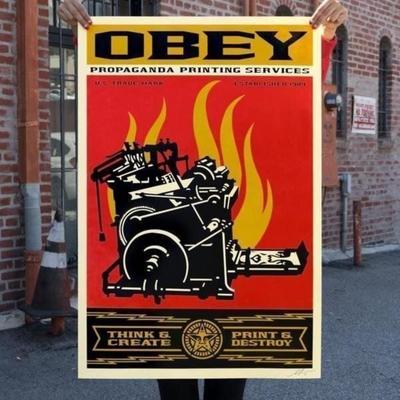
Artist: Shepard Fairey Title: Print and Destroy Offset lithograph on cream Speckletone paper. Size: 24 x 36 inches Signed by Shepard Fairey. Expanding on the legacies of artists such as Keith Haring and Andy Warhol, Shepard Faireys practice disrupts the distinction between fine and commercial art. A major artist of the street art movement, Fairey rose to prominence in the early 1990s through the dispersion of posters, stickers, and murals, related to his Obey Giant campaign, which yielded an international cultural phenomenon. Faireys iconic poster of President Barack Obama was adopted as the official emblem associated with the presidential campaign and encapsulates a number of recurring concerns in the artists work, including propaganda, portraiture, and political power. 27 / 776 -
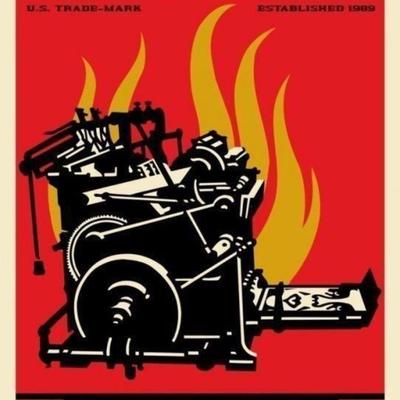
Artist: Shepard Fairey Title: Print and Destroy Offset lithograph on cream Speckletone paper. Size: 24 x 36 inches Signed by Shepard Fairey. Expanding on the legacies of artists such as Keith Haring and Andy Warhol, Shepard Faireys practice disrupts the distinction between fine and commercial art. A major artist of the street art movement, Fairey rose to prominence in the early 1990s through the dispersion of posters, stickers, and murals, related to his Obey Giant campaign, which yielded an international cultural phenomenon. Faireys iconic poster of President Barack Obama was adopted as the official emblem associated with the presidential campaign and encapsulates a number of recurring concerns in the artists work, including propaganda, portraiture, and political power. 28 / 776 -

Artist: Shepard Fairey Title: Print and Destroy Offset lithograph on cream Speckletone paper. Size: 24 x 36 inches Signed by Shepard Fairey. Expanding on the legacies of artists such as Keith Haring and Andy Warhol, Shepard Faireys practice disrupts the distinction between fine and commercial art. A major artist of the street art movement, Fairey rose to prominence in the early 1990s through the dispersion of posters, stickers, and murals, related to his Obey Giant campaign, which yielded an international cultural phenomenon. Faireys iconic poster of President Barack Obama was adopted as the official emblem associated with the presidential campaign and encapsulates a number of recurring concerns in the artists work, including propaganda, portraiture, and political power. 29 / 776 -
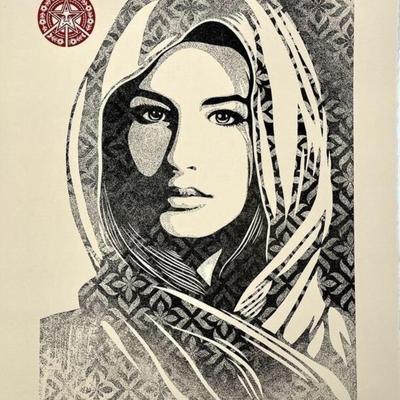
Artist: Shepard Fairey Title: Universal Dignity Size: 15 inches x 19.5 inches Edition of 450 Letterpress on cream cotton paper with hand-deckled edges. Signed by Shepard Fairey. Obey publishing chop in lower left corner. Released: March 3, 2022 About the Artwork: The Universal Dignity print aims to promote peace, equality, and humanity. Id like to see a fundamental assumption that ALL people deserve respect and human dignity. This applies to the universal meaning of dignity, to be valued, respected for what you are, what you believe in, and how you live your life. I consider myself a global citizen, and though I think the nations serve a structural function, all people should be equal, and everyones life counts the same regardless of where they live. In line with the philosophy of this image, a portion of the proceeds will be donated to the IRC (International Rescue Committee) to support Ukrainian refugees. Thanks for caring. 30 / 776 -
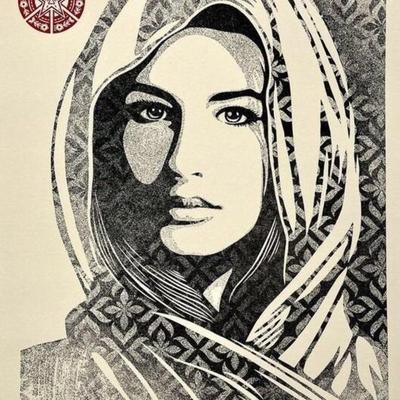
Artist: Shepard Fairey Title: Universal Dignity Size: 15 inches x 19.5 inches Edition of 450 Letterpress on cream cotton paper with hand-deckled edges. Signed by Shepard Fairey. Obey publishing chop in lower left corner. Released: March 3, 2022 About the Artwork: The Universal Dignity print aims to promote peace, equality, and humanity. Id like to see a fundamental assumption that ALL people deserve respect and human dignity. This applies to the universal meaning of dignity, to be valued, respected for what you are, what you believe in, and how you live your life. I consider myself a global citizen, and though I think the nations serve a structural function, all people should be equal, and everyones life counts the same regardless of where they live. In line with the philosophy of this image, a portion of the proceeds will be donated to the IRC (International Rescue Committee) to support Ukrainian refugees. Thanks for caring. 31 / 776 -

Artist: Shepard Fairey Title: Universal Dignity Size: 15 inches x 19.5 inches Edition of 450 Letterpress on cream cotton paper with hand-deckled edges. Signed by Shepard Fairey. Obey publishing chop in lower left corner. Released: March 3, 2022 About the Artwork: The Universal Dignity print aims to promote peace, equality, and humanity. Id like to see a fundamental assumption that ALL people deserve respect and human dignity. This applies to the universal meaning of dignity, to be valued, respected for what you are, what you believe in, and how you live your life. I consider myself a global citizen, and though I think the nations serve a structural function, all people should be equal, and everyones life counts the same regardless of where they live. In line with the philosophy of this image, a portion of the proceeds will be donated to the IRC (International Rescue Committee) to support Ukrainian refugees. Thanks for caring. 32 / 776 -
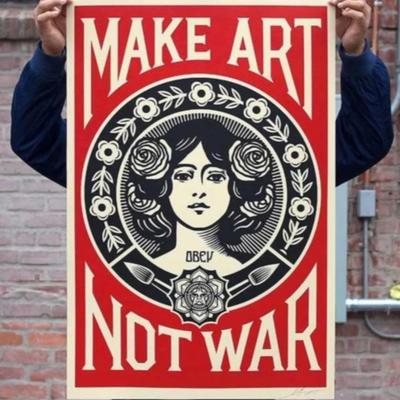
MAKE ART NOT WAR Signed Offset Lithograph.This print, created during the Iraq war, is an alternative phrase inspired by popular 1960s anti-war mantra, Make love, not war. In this case, Fairey asserts the need for creative rather than destructive acts. The Art Nouveau style of the image is an additional reference to the influence of Art Nouveau on hippie and psychedelic art of the ‘60s, including many anti-Vietnam war posters.Encased within a floral garland, the female figure appears more self-assured and real rather than ethereal. The placement of two paintbrushes below her portrait not only refers to a classical tool of art production but resembles spears, which when read alongside the directive to OBEY that appears on her neck, simultaneously makes the otherwise palatable message more pointed.36 x 24 inches. Offset lithograph on cream Speckle Tone paper. Signed by Shepard Fairey. Open edition 37 / 776 -

MAKE ART NOT WAR Signed Offset Lithograph.This print, created during the Iraq war, is an alternative phrase inspired by popular 1960s anti-war mantra, Make love, not war. In this case, Fairey asserts the need for creative rather than destructive acts. The Art Nouveau style of the image is an additional reference to the influence of Art Nouveau on hippie and psychedelic art of the ‘60s, including many anti-Vietnam war posters.Encased within a floral garland, the female figure appears more self-assured and real rather than ethereal. The placement of two paintbrushes below her portrait not only refers to a classical tool of art production but resembles spears, which when read alongside the directive to OBEY that appears on her neck, simultaneously makes the otherwise palatable message more pointed.36 x 24 inches. Offset lithograph on cream Speckle Tone paper. Signed by Shepard Fairey. Open edition 38 / 776 -
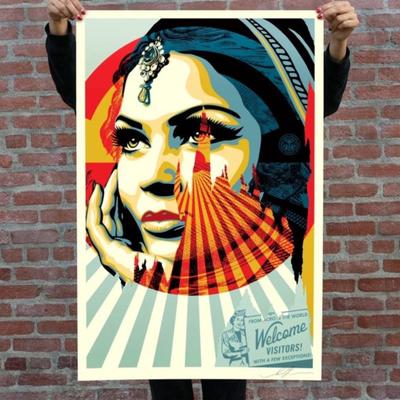
TARGET EXCEPTIONS Signed Offset Lithograph. My Target Exceptions print addresses the challenges of both visiting and becoming a resident of the United States for many people. As it turns out, there are various target criteria that make a person an ideal candidate to immigrate, but most people who might long to fulfill the “American Dream†are exceptions to the target qualifications, especially considering the attitudes and attempted policies of the current administration. 24 x 36 inches. Offset Lithograph on thick cream Speckle Tone paper. Signed by Shepard Fairey. Open Edition. 43 / 776 -

TARGET EXCEPTIONS Signed Offset Lithograph. My Target Exceptions print addresses the challenges of both visiting and becoming a resident of the United States for many people. As it turns out, there are various target criteria that make a person an ideal candidate to immigrate, but most people who might long to fulfill the “American Dream†are exceptions to the target qualifications, especially considering the attitudes and attempted policies of the current administration. 24 x 36 inches. Offset Lithograph on thick cream Speckle Tone paper. Signed by Shepard Fairey. Open Edition. 44 / 776 -
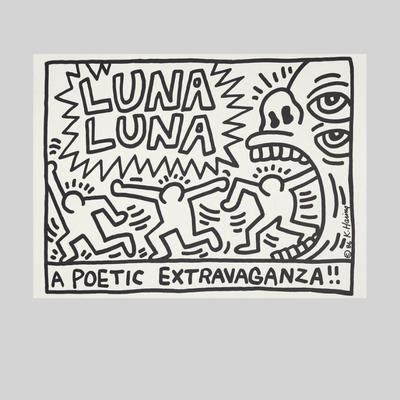
Item will be shipped within 2 weeks. An amazing chance to own and incredible rare piece of Keith Haring History. KEITH HARING American, b. 1958, Reading, Pennsylvania. d. 1990 Uniting the bright colors of Pop Art, the whimsy of cartoons, and impulsiveness of graffiti, Haring developed a distinct, iconic style seen in his drawings of radiant babies, dog men and dancing figures. A prolific artist and activist, Haring created more than ten thousand artworks before his death from AIDS-related illness in 1990. Dimensions: 23.4" x 33.1" (594mm x 841mm), 120 GSM Paper Quality: Thin smooth machine-made wove paper with optical brighteners Condition: Faint yellowing Vintage poster print designed by Keith Haring for the original Luna Luna experience in 1987. Haring's world-famous style, crackling with energy, was a natural fit for the park's "poetic extravaganza." Printed in Europe, this poster was discovered in the first shipping container opened by the Luna Luna team in their Los Angeles studio at approximately 11:22 a.m. on January 31, 2022. Please bear in mind: This is a vintage print, recovered from a lot of archival merchandise unseen for nearly three decades. It has been thoroughly inspected by our conservation team and is declared to be undamaged. A certificate of authenticity is included. 47 / 776 -
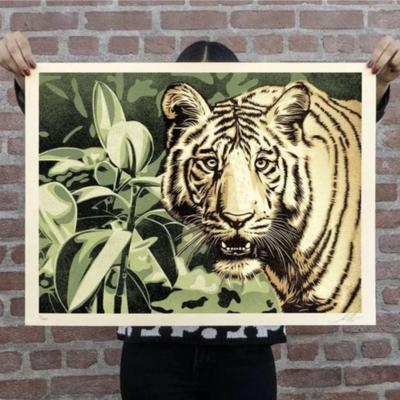
Artist: Shepard Fairey Title: Grace And Power Under Pressure (Green) Screen print on thick cream Speckletone paper. Hand signed and numbered. Edition of 300. 18 x 24 Inches. Year: 2022 About the Artwork: The Earths ecosystem is beautifully complex but fragile. Over half of the Earths biodiversity has disappeared in the last 50 years alone. So, to celebrate the Year of the Tiger, I have teamed up with WWF Singapore to celebrate these animals. Many beautiful creatures are gone forever, and each loss erodes the foundation of our ecosystem. The tiger is one of the most graceful and powerful animals in the world. They have no formidable foes in nature other than humans. Human poaching and destruction of their natural habitat has driven tiger numbers to decline by an alarming 97% and they are on the verge of extinction in parts of Southeast Asia. I hope this illustration can be a reminder for us to value and protect these magnificent animals as well as keep in mind the importance of biological diversity to a healthy planet. 48 / 776 -

Artist: Shepard Fairey Title: Grace And Power Under Pressure (Green) Screen print on thick cream Speckletone paper. Hand signed and numbered. Edition of 300. 18 x 24 Inches. Year: 2022 About the Artwork: The Earths ecosystem is beautifully complex but fragile. Over half of the Earths biodiversity has disappeared in the last 50 years alone. So, to celebrate the Year of the Tiger, I have teamed up with WWF Singapore to celebrate these animals. Many beautiful creatures are gone forever, and each loss erodes the foundation of our ecosystem. The tiger is one of the most graceful and powerful animals in the world. They have no formidable foes in nature other than humans. Human poaching and destruction of their natural habitat has driven tiger numbers to decline by an alarming 97% and they are on the verge of extinction in parts of Southeast Asia. I hope this illustration can be a reminder for us to value and protect these magnificent animals as well as keep in mind the importance of biological diversity to a healthy planet. 49 / 776 -
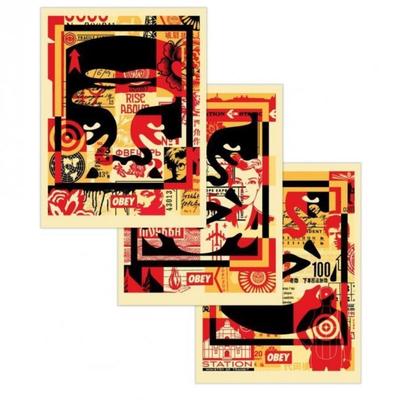
Artist: Shepard Fairey Title: OBEY 3-FACE COLLAGE Size: 18 X 24 inches Signed Offset Lithograph Set. Offset lithograph set of 3 prints on cream Speckle Tone paper. Each print signed by Shepard Fairey. Expanding on the legacies of artists such as Keith Haring and Andy Warhol, Shepard Faireys practice disrupts the distinction between fine and commercial art. A major artist of the street art movement, Fairey rose to prominence in the early 1990s through the dispersion of posters, stickers, and murals, related to his Obey Giant campaign, which yielded an international cultural phenomenon. Faireys iconic poster of President Barack Obama was adopted as the official emblem associated with the presidential campaign and encapsulates a number of recurring concerns in the artists work, including propaganda, portraiture, and political power. 50 / 776 -
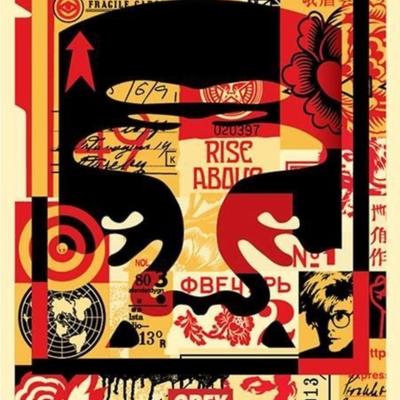
Artist: Shepard Fairey Title: OBEY 3-FACE COLLAGE Size: 18 X 24 inches Signed Offset Lithograph Set. Offset lithograph set of 3 prints on cream Speckle Tone paper. Each print signed by Shepard Fairey. Expanding on the legacies of artists such as Keith Haring and Andy Warhol, Shepard Faireys practice disrupts the distinction between fine and commercial art. A major artist of the street art movement, Fairey rose to prominence in the early 1990s through the dispersion of posters, stickers, and murals, related to his Obey Giant campaign, which yielded an international cultural phenomenon. Faireys iconic poster of President Barack Obama was adopted as the official emblem associated with the presidential campaign and encapsulates a number of recurring concerns in the artists work, including propaganda, portraiture, and political power. 51 / 776 -
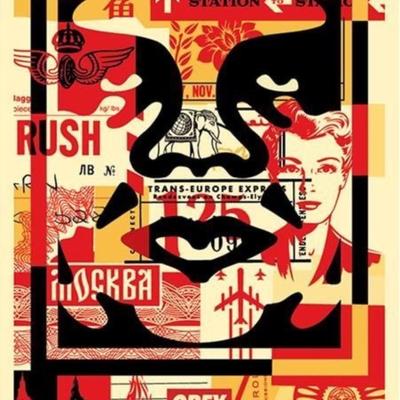
Artist: Shepard Fairey Title: OBEY 3-FACE COLLAGE Size: 18 X 24 inches Signed Offset Lithograph Set. Offset lithograph set of 3 prints on cream Speckle Tone paper. Each print signed by Shepard Fairey. Expanding on the legacies of artists such as Keith Haring and Andy Warhol, Shepard Faireys practice disrupts the distinction between fine and commercial art. A major artist of the street art movement, Fairey rose to prominence in the early 1990s through the dispersion of posters, stickers, and murals, related to his Obey Giant campaign, which yielded an international cultural phenomenon. Faireys iconic poster of President Barack Obama was adopted as the official emblem associated with the presidential campaign and encapsulates a number of recurring concerns in the artists work, including propaganda, portraiture, and political power. 52 / 776 -
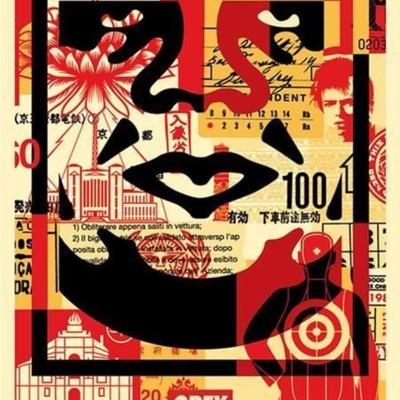
Artist: Shepard Fairey Title: OBEY 3-FACE COLLAGE Size: 18 X 24 inches Signed Offset Lithograph Set. Offset lithograph set of 3 prints on cream Speckle Tone paper. Each print signed by Shepard Fairey. Expanding on the legacies of artists such as Keith Haring and Andy Warhol, Shepard Faireys practice disrupts the distinction between fine and commercial art. A major artist of the street art movement, Fairey rose to prominence in the early 1990s through the dispersion of posters, stickers, and murals, related to his Obey Giant campaign, which yielded an international cultural phenomenon. Faireys iconic poster of President Barack Obama was adopted as the official emblem associated with the presidential campaign and encapsulates a number of recurring concerns in the artists work, including propaganda, portraiture, and political power. 53 / 776 -

Artist: Shepard Fairey Title: OBEY 3-FACE COLLAGE Size: 18 X 24 inches Signed Offset Lithograph Set. Offset lithograph set of 3 prints on cream Speckle Tone paper. Each print signed by Shepard Fairey. Expanding on the legacies of artists such as Keith Haring and Andy Warhol, Shepard Faireys practice disrupts the distinction between fine and commercial art. A major artist of the street art movement, Fairey rose to prominence in the early 1990s through the dispersion of posters, stickers, and murals, related to his Obey Giant campaign, which yielded an international cultural phenomenon. Faireys iconic poster of President Barack Obama was adopted as the official emblem associated with the presidential campaign and encapsulates a number of recurring concerns in the artists work, including propaganda, portraiture, and political power. 54 / 776 -
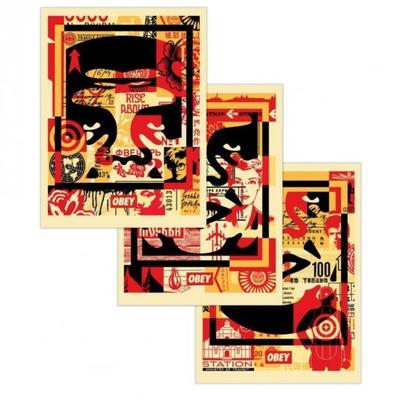
Artist: Shepard Fairey Title: OBEY 3-FACE COLLAGE Size: 18 X 24 inches Signed Offset Lithograph Set. Offset lithograph set of 3 prints on cream Speckle Tone paper. Each print signed by Shepard Fairey. Expanding on the legacies of artists such as Keith Haring and Andy Warhol, Shepard Faireys practice disrupts the distinction between fine and commercial art. A major artist of the street art movement, Fairey rose to prominence in the early 1990s through the dispersion of posters, stickers, and murals, related to his Obey Giant campaign, which yielded an international cultural phenomenon. Faireys iconic poster of President Barack Obama was adopted as the official emblem associated with the presidential campaign and encapsulates a number of recurring concerns in the artists work, including propaganda, portraiture, and political power. 55 / 776 -
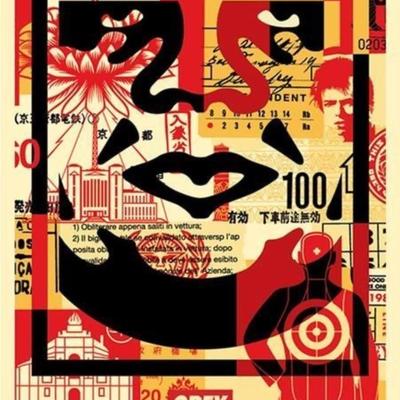
Artist: Shepard Fairey Title: OBEY 3-FACE COLLAGE Size: 18 X 24 inches Signed Offset Lithograph Set. Offset lithograph set of 3 prints on cream Speckle Tone paper. Each print signed by Shepard Fairey. Expanding on the legacies of artists such as Keith Haring and Andy Warhol, Shepard Faireys practice disrupts the distinction between fine and commercial art. A major artist of the street art movement, Fairey rose to prominence in the early 1990s through the dispersion of posters, stickers, and murals, related to his Obey Giant campaign, which yielded an international cultural phenomenon. Faireys iconic poster of President Barack Obama was adopted as the official emblem associated with the presidential campaign and encapsulates a number of recurring concerns in the artists work, including propaganda, portraiture, and political power. 56 / 776 -
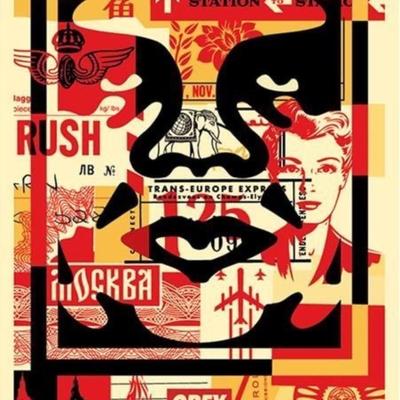
Artist: Shepard Fairey Title: OBEY 3-FACE COLLAGE Size: 18 X 24 inches Signed Offset Lithograph Set. Offset lithograph set of 3 prints on cream Speckle Tone paper. Each print signed by Shepard Fairey. Expanding on the legacies of artists such as Keith Haring and Andy Warhol, Shepard Faireys practice disrupts the distinction between fine and commercial art. A major artist of the street art movement, Fairey rose to prominence in the early 1990s through the dispersion of posters, stickers, and murals, related to his Obey Giant campaign, which yielded an international cultural phenomenon. Faireys iconic poster of President Barack Obama was adopted as the official emblem associated with the presidential campaign and encapsulates a number of recurring concerns in the artists work, including propaganda, portraiture, and political power. 57 / 776 -
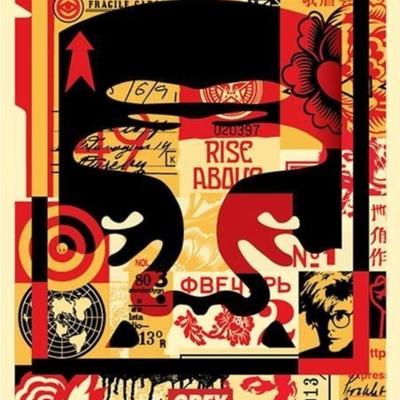
Artist: Shepard Fairey Title: OBEY 3-FACE COLLAGE Size: 18 X 24 inches Signed Offset Lithograph Set. Offset lithograph set of 3 prints on cream Speckle Tone paper. Each print signed by Shepard Fairey. Expanding on the legacies of artists such as Keith Haring and Andy Warhol, Shepard Faireys practice disrupts the distinction between fine and commercial art. A major artist of the street art movement, Fairey rose to prominence in the early 1990s through the dispersion of posters, stickers, and murals, related to his Obey Giant campaign, which yielded an international cultural phenomenon. Faireys iconic poster of President Barack Obama was adopted as the official emblem associated with the presidential campaign and encapsulates a number of recurring concerns in the artists work, including propaganda, portraiture, and political power. 58 / 776 -

Artist: Shepard Fairey Title: OBEY 3-FACE COLLAGE Size: 18 X 24 inches Signed Offset Lithograph Set. Offset lithograph set of 3 prints on cream Speckle Tone paper. Each print signed by Shepard Fairey. Expanding on the legacies of artists such as Keith Haring and Andy Warhol, Shepard Faireys practice disrupts the distinction between fine and commercial art. A major artist of the street art movement, Fairey rose to prominence in the early 1990s through the dispersion of posters, stickers, and murals, related to his Obey Giant campaign, which yielded an international cultural phenomenon. Faireys iconic poster of President Barack Obama was adopted as the official emblem associated with the presidential campaign and encapsulates a number of recurring concerns in the artists work, including propaganda, portraiture, and political power. 59 / 776 -
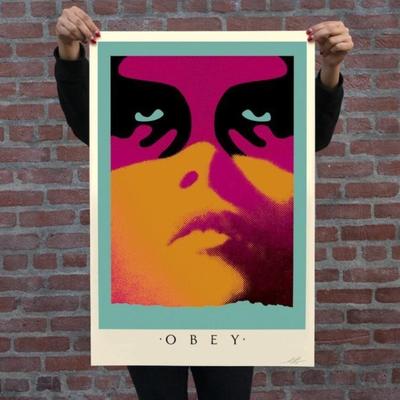
Artist: Shepard Fairey Title: Shadowplay 24 x 36 inches Offset on thick cream Speckletone paper. Signed by Shepard Fairey. Expanding on the legacies of artists such as Keith Haring and Andy Warhol, Shepard Faireys practice disrupts the distinction between fine and commercial art. A major artist of the street art movement, Fairey rose to prominence in the early 1990s through the dispersion of posters, stickers, and murals, related to his Obey Giant campaign, which yielded an international cultural phenomenon. Faireys iconic poster of President Barack Obama was adopted as the official emblem associated with the presidential campaign and encapsulates a number of recurring concerns in the artists work, including propaganda, portraiture, and political power. 60 / 776 -

Artist: Shepard Fairey Title: Shadowplay 24 x 36 inches Offset on thick cream Speckletone paper. Signed by Shepard Fairey. Expanding on the legacies of artists such as Keith Haring and Andy Warhol, Shepard Faireys practice disrupts the distinction between fine and commercial art. A major artist of the street art movement, Fairey rose to prominence in the early 1990s through the dispersion of posters, stickers, and murals, related to his Obey Giant campaign, which yielded an international cultural phenomenon. Faireys iconic poster of President Barack Obama was adopted as the official emblem associated with the presidential campaign and encapsulates a number of recurring concerns in the artists work, including propaganda, portraiture, and political power. 61 / 776 -
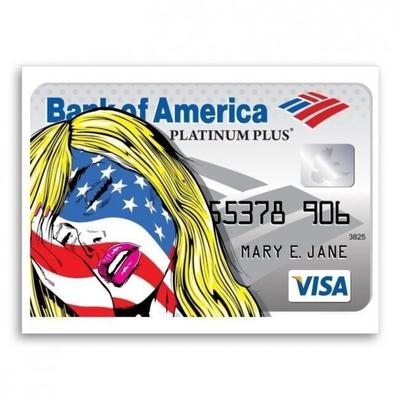
ARTIST: Denial TITLE: BANK OF UGH-MERICA Numbered, Signed, Stamped on Reverse EDITION SIZE: 25 MEDIUM: Archival Pigment Print on MOAB Fine Art Paper 290 GSM SIZE: 18"x 24" ABOUT DENIAL: DENIAL is a Canadian artist whose work critiques consumerism and the human condition. Though based in Windsor Ontario, DENIAL spends much of the year traveling and exhibiting throughout Canada and USA, having done solo shows in Los Angeles, Chicago, Detroit, New York, Toronto and Vancouver. In 2000 he adopted the moniker DENIAL as a means of poking fun at advertising, politics and media messages that contemporary society is often "in denial" about. Since then he has maintained an ongoing global street-campaign of over 500, 000 stickers, placards and murals, using the alpha-numeric characters D3N!@L. Intended as a conceptual means of marketing absurdism, DENIAL also challenges traditional notions of graffiti and public art through his bold and often satirical visual subversions. 62 / 776 -
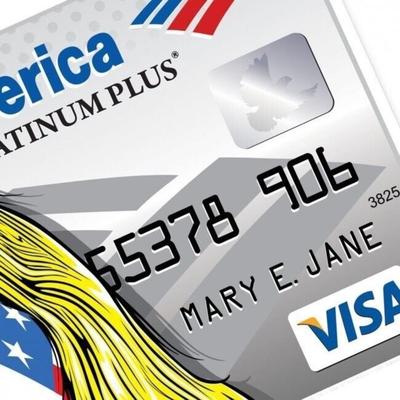
ARTIST: Denial TITLE: BANK OF UGH-MERICA Numbered, Signed, Stamped on Reverse EDITION SIZE: 25 MEDIUM: Archival Pigment Print on MOAB Fine Art Paper 290 GSM SIZE: 18"x 24" ABOUT DENIAL: DENIAL is a Canadian artist whose work critiques consumerism and the human condition. Though based in Windsor Ontario, DENIAL spends much of the year traveling and exhibiting throughout Canada and USA, having done solo shows in Los Angeles, Chicago, Detroit, New York, Toronto and Vancouver. In 2000 he adopted the moniker DENIAL as a means of poking fun at advertising, politics and media messages that contemporary society is often "in denial" about. Since then he has maintained an ongoing global street-campaign of over 500, 000 stickers, placards and murals, using the alpha-numeric characters D3N!@L. Intended as a conceptual means of marketing absurdism, DENIAL also challenges traditional notions of graffiti and public art through his bold and often satirical visual subversions. 63 / 776 -
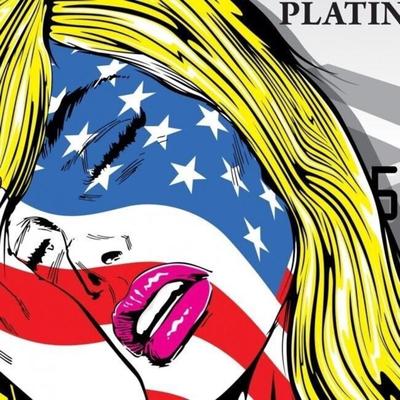
ARTIST: Denial TITLE: BANK OF UGH-MERICA Numbered, Signed, Stamped on Reverse EDITION SIZE: 25 MEDIUM: Archival Pigment Print on MOAB Fine Art Paper 290 GSM SIZE: 18"x 24" ABOUT DENIAL: DENIAL is a Canadian artist whose work critiques consumerism and the human condition. Though based in Windsor Ontario, DENIAL spends much of the year traveling and exhibiting throughout Canada and USA, having done solo shows in Los Angeles, Chicago, Detroit, New York, Toronto and Vancouver. In 2000 he adopted the moniker DENIAL as a means of poking fun at advertising, politics and media messages that contemporary society is often "in denial" about. Since then he has maintained an ongoing global street-campaign of over 500, 000 stickers, placards and murals, using the alpha-numeric characters D3N!@L. Intended as a conceptual means of marketing absurdism, DENIAL also challenges traditional notions of graffiti and public art through his bold and often satirical visual subversions. 64 / 776 -

ARTIST: Denial TITLE: BANK OF UGH-MERICA Numbered, Signed, Stamped on Reverse EDITION SIZE: 25 MEDIUM: Archival Pigment Print on MOAB Fine Art Paper 290 GSM SIZE: 18"x 24" ABOUT DENIAL: DENIAL is a Canadian artist whose work critiques consumerism and the human condition. Though based in Windsor Ontario, DENIAL spends much of the year traveling and exhibiting throughout Canada and USA, having done solo shows in Los Angeles, Chicago, Detroit, New York, Toronto and Vancouver. In 2000 he adopted the moniker DENIAL as a means of poking fun at advertising, politics and media messages that contemporary society is often "in denial" about. Since then he has maintained an ongoing global street-campaign of over 500, 000 stickers, placards and murals, using the alpha-numeric characters D3N!@L. Intended as a conceptual means of marketing absurdism, DENIAL also challenges traditional notions of graffiti and public art through his bold and often satirical visual subversions. 65 / 776 -
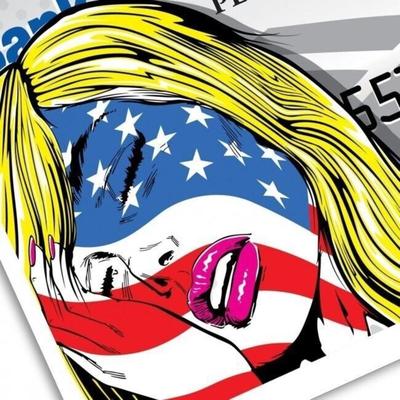
ARTIST: Denial TITLE: BANK OF UGH-MERICA Numbered, Signed, Stamped on Reverse EDITION SIZE: 25 MEDIUM: Archival Pigment Print on MOAB Fine Art Paper 290 GSM SIZE: 18"x 24" ABOUT DENIAL: DENIAL is a Canadian artist whose work critiques consumerism and the human condition. Though based in Windsor Ontario, DENIAL spends much of the year traveling and exhibiting throughout Canada and USA, having done solo shows in Los Angeles, Chicago, Detroit, New York, Toronto and Vancouver. In 2000 he adopted the moniker DENIAL as a means of poking fun at advertising, politics and media messages that contemporary society is often "in denial" about. Since then he has maintained an ongoing global street-campaign of over 500, 000 stickers, placards and murals, using the alpha-numeric characters D3N!@L. Intended as a conceptual means of marketing absurdism, DENIAL also challenges traditional notions of graffiti and public art through his bold and often satirical visual subversions. 66 / 776 -
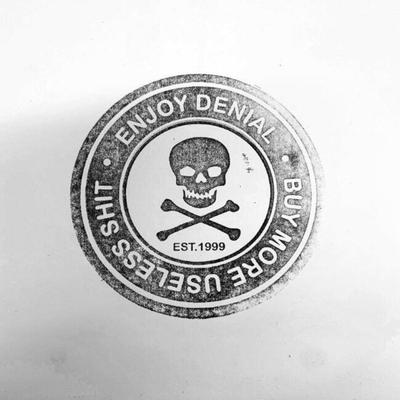
ARTIST: Denial TITLE: BANK OF UGH-MERICA Numbered, Signed, Stamped on Reverse EDITION SIZE: 25 MEDIUM: Archival Pigment Print on MOAB Fine Art Paper 290 GSM SIZE: 18"x 24" ABOUT DENIAL: DENIAL is a Canadian artist whose work critiques consumerism and the human condition. Though based in Windsor Ontario, DENIAL spends much of the year traveling and exhibiting throughout Canada and USA, having done solo shows in Los Angeles, Chicago, Detroit, New York, Toronto and Vancouver. In 2000 he adopted the moniker DENIAL as a means of poking fun at advertising, politics and media messages that contemporary society is often "in denial" about. Since then he has maintained an ongoing global street-campaign of over 500, 000 stickers, placards and murals, using the alpha-numeric characters D3N!@L. Intended as a conceptual means of marketing absurdism, DENIAL also challenges traditional notions of graffiti and public art through his bold and often satirical visual subversions. 67 / 776 -
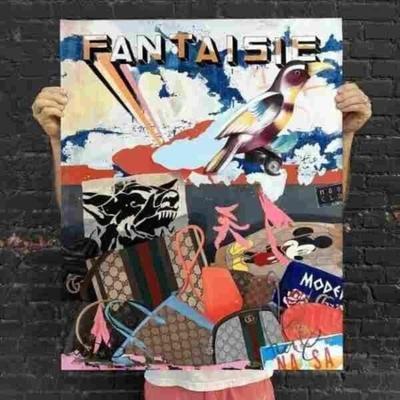
FAILE - FANTAISIE PRINT - 2021 24 x 30 inches Archival Ink on Entrada 290gsm Cotton Rag Embossed, Signed and Numbered 2021 This is a print of Faile's painting from our Off The Walls show in Paris. Much like the Kool Living print, Fantaisie (Fantasy with a French twist) is a luscious archival pigment ink on a heavyweight archival matte art paper, that captures all the detail of the canvas and painted love. FAILE (Pronounced "fail") is a Brooklyn-based artistic collaboration between Patrick McNeil (born 1975) and Patrick Miller (born 1976). Since its inception in 1999, FAILE has been known for a wide-ranging multimedia practice recognizable for its explorations of duality through a fragmented style of appropriation and collage. While painting and printmaking remain central to their approach, over the past decade FAILE has adapted its signature mass culture-driven iconography to an array of materials and techniques, from wooden boxes and window pallets to more traditional canvas, prints, sculptures, stencils, installation, and prayer wheels. FAILE's work is constructed from found visual imagery, and blurs the line between "high" and "low" culture, but recent exhibitions demonstrate an emphasis on audience participation, a critique of consumerism, and the incorporation of religious media, architecture, and site-specific/archival research into their work. 68 / 776 -
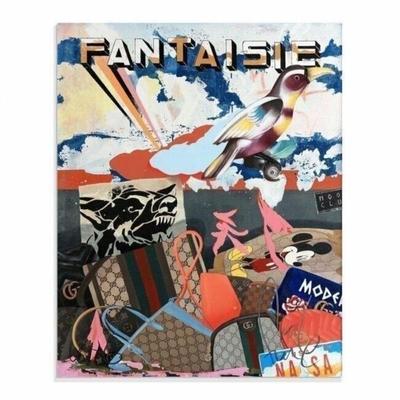
FAILE - FANTAISIE PRINT - 2021 24 x 30 inches Archival Ink on Entrada 290gsm Cotton Rag Embossed, Signed and Numbered 2021 This is a print of Faile's painting from our Off The Walls show in Paris. Much like the Kool Living print, Fantaisie (Fantasy with a French twist) is a luscious archival pigment ink on a heavyweight archival matte art paper, that captures all the detail of the canvas and painted love. FAILE (Pronounced "fail") is a Brooklyn-based artistic collaboration between Patrick McNeil (born 1975) and Patrick Miller (born 1976). Since its inception in 1999, FAILE has been known for a wide-ranging multimedia practice recognizable for its explorations of duality through a fragmented style of appropriation and collage. While painting and printmaking remain central to their approach, over the past decade FAILE has adapted its signature mass culture-driven iconography to an array of materials and techniques, from wooden boxes and window pallets to more traditional canvas, prints, sculptures, stencils, installation, and prayer wheels. FAILE's work is constructed from found visual imagery, and blurs the line between "high" and "low" culture, but recent exhibitions demonstrate an emphasis on audience participation, a critique of consumerism, and the incorporation of religious media, architecture, and site-specific/archival research into their work. 69 / 776 -
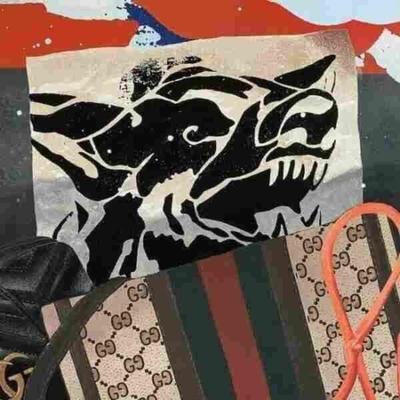
FAILE - FANTAISIE PRINT - 2021 24 x 30 inches Archival Ink on Entrada 290gsm Cotton Rag Embossed, Signed and Numbered 2021 This is a print of Faile's painting from our Off The Walls show in Paris. Much like the Kool Living print, Fantaisie (Fantasy with a French twist) is a luscious archival pigment ink on a heavyweight archival matte art paper, that captures all the detail of the canvas and painted love. FAILE (Pronounced "fail") is a Brooklyn-based artistic collaboration between Patrick McNeil (born 1975) and Patrick Miller (born 1976). Since its inception in 1999, FAILE has been known for a wide-ranging multimedia practice recognizable for its explorations of duality through a fragmented style of appropriation and collage. While painting and printmaking remain central to their approach, over the past decade FAILE has adapted its signature mass culture-driven iconography to an array of materials and techniques, from wooden boxes and window pallets to more traditional canvas, prints, sculptures, stencils, installation, and prayer wheels. FAILE's work is constructed from found visual imagery, and blurs the line between "high" and "low" culture, but recent exhibitions demonstrate an emphasis on audience participation, a critique of consumerism, and the incorporation of religious media, architecture, and site-specific/archival research into their work. 70 / 776 -
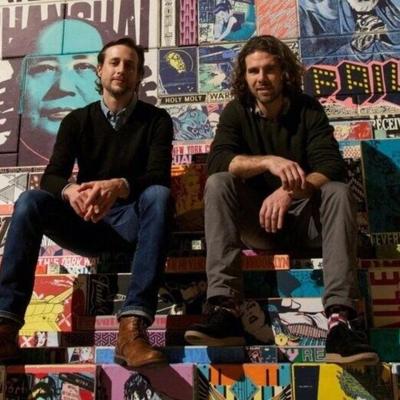
FAILE - FANTAISIE PRINT - 2021 24 x 30 inches Archival Ink on Entrada 290gsm Cotton Rag Embossed, Signed and Numbered 2021 This is a print of Faile's painting from our Off The Walls show in Paris. Much like the Kool Living print, Fantaisie (Fantasy with a French twist) is a luscious archival pigment ink on a heavyweight archival matte art paper, that captures all the detail of the canvas and painted love. FAILE (Pronounced "fail") is a Brooklyn-based artistic collaboration between Patrick McNeil (born 1975) and Patrick Miller (born 1976). Since its inception in 1999, FAILE has been known for a wide-ranging multimedia practice recognizable for its explorations of duality through a fragmented style of appropriation and collage. While painting and printmaking remain central to their approach, over the past decade FAILE has adapted its signature mass culture-driven iconography to an array of materials and techniques, from wooden boxes and window pallets to more traditional canvas, prints, sculptures, stencils, installation, and prayer wheels. FAILE's work is constructed from found visual imagery, and blurs the line between "high" and "low" culture, but recent exhibitions demonstrate an emphasis on audience participation, a critique of consumerism, and the incorporation of religious media, architecture, and site-specific/archival research into their work. 71 / 776 -
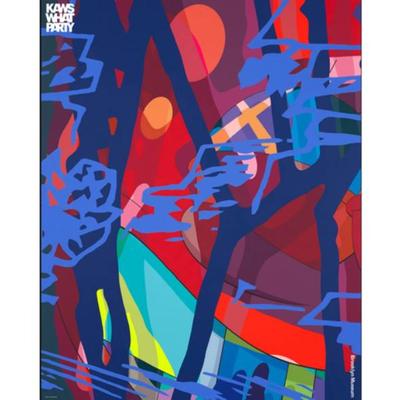
Kaws - Score Years - XXL Poster Published by The Brooklyn Museum Deadstock. Paper, 38 x 48 in. KAWS, born Brian Donnelly, straddles the worlds of art and design with a prolific body of work that ranges from paintings, murals, and large-scale sculptures to merchandise, furniture, and toys. Much of it centers on Companion, a depressed Mickey Mouse like character with Xs for eyes. KAWS got his start as a street artist in the late 90s. His practice has earned him major shows at the Brooklyn Museum, the National Gallery of Victoria in Melbourne, and the Yuz Museum in Shanghai, among other institutions. Evoking the sensibilities of Pop artists such as Andy Warhol and Claes Oldenburg, KAWS embraces frequent brand collaborations and addresses the intersection of art and commerce with a playful sense of humor. His work has fetched eight figures on the secondary market. 72 / 776 -
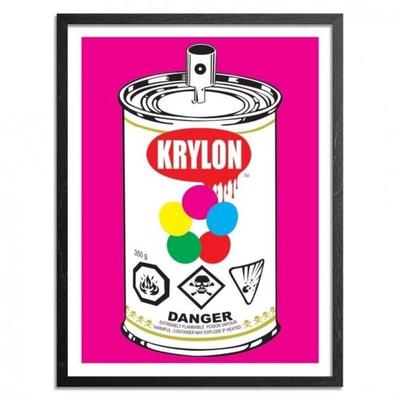
Artist: Denial Title: Pop Can - Pink Edition Type: 7-Color Screen Print on Fine Art Paper Size: 18 x 24 Inches Release: June 04, 2018 Run of: 40 ABOUT DENIAL: DENIAL is a Canadian artist whose work critiques consumerism and the human condition. Though based in Windsor Ontario, DENIAL spends much of the year traveling and exhibiting throughout Canada and USA, having done solo shows in Los Angeles, Chicago, Detroit, New York, Toronto and Vancouver. In 2000 he adopted the moniker DENIAL as a means of poking fun at advertising, politics and media messages that contemporary society is often "in denial" about. Since then he has maintained an ongoing global street-campaign of over 500, 000 stickers, placards and murals, using the alpha-numeric characters "D3N!@L". Intended as a conceptual means of marketing absurdism, DENIAL also challenges traditional notions of graffiti and public art through his bold and often satirical visual subversions. 73 / 776 -

Artist: Denial Title: Pop Can - Pink Edition Type: 7-Color Screen Print on Fine Art Paper Size: 18 x 24 Inches Release: June 04, 2018 Run of: 40 ABOUT DENIAL: DENIAL is a Canadian artist whose work critiques consumerism and the human condition. Though based in Windsor Ontario, DENIAL spends much of the year traveling and exhibiting throughout Canada and USA, having done solo shows in Los Angeles, Chicago, Detroit, New York, Toronto and Vancouver. In 2000 he adopted the moniker DENIAL as a means of poking fun at advertising, politics and media messages that contemporary society is often "in denial" about. Since then he has maintained an ongoing global street-campaign of over 500, 000 stickers, placards and murals, using the alpha-numeric characters "D3N!@L". Intended as a conceptual means of marketing absurdism, DENIAL also challenges traditional notions of graffiti and public art through his bold and often satirical visual subversions. 74 / 776 -
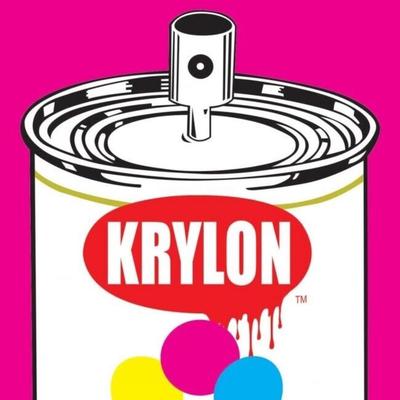
Artist: Denial Title: Pop Can - Pink Edition Type: 7-Color Screen Print on Fine Art Paper Size: 18 x 24 Inches Release: June 04, 2018 Run of: 40 ABOUT DENIAL: DENIAL is a Canadian artist whose work critiques consumerism and the human condition. Though based in Windsor Ontario, DENIAL spends much of the year traveling and exhibiting throughout Canada and USA, having done solo shows in Los Angeles, Chicago, Detroit, New York, Toronto and Vancouver. In 2000 he adopted the moniker DENIAL as a means of poking fun at advertising, politics and media messages that contemporary society is often "in denial" about. Since then he has maintained an ongoing global street-campaign of over 500, 000 stickers, placards and murals, using the alpha-numeric characters "D3N!@L". Intended as a conceptual means of marketing absurdism, DENIAL also challenges traditional notions of graffiti and public art through his bold and often satirical visual subversions. 75 / 776 -
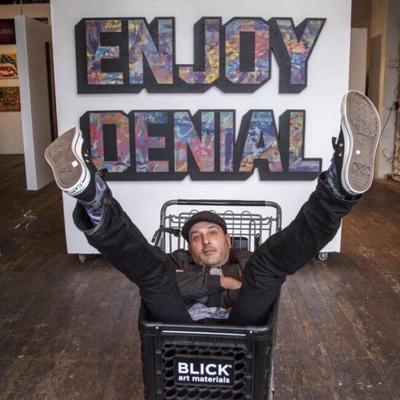
Artist: Denial Title: Pop Can - Pink Edition Type: 7-Color Screen Print on Fine Art Paper Size: 18 x 24 Inches Release: June 04, 2018 Run of: 40 ABOUT DENIAL: DENIAL is a Canadian artist whose work critiques consumerism and the human condition. Though based in Windsor Ontario, DENIAL spends much of the year traveling and exhibiting throughout Canada and USA, having done solo shows in Los Angeles, Chicago, Detroit, New York, Toronto and Vancouver. In 2000 he adopted the moniker DENIAL as a means of poking fun at advertising, politics and media messages that contemporary society is often "in denial" about. Since then he has maintained an ongoing global street-campaign of over 500, 000 stickers, placards and murals, using the alpha-numeric characters "D3N!@L". Intended as a conceptual means of marketing absurdism, DENIAL also challenges traditional notions of graffiti and public art through his bold and often satirical visual subversions. 76 / 776 -
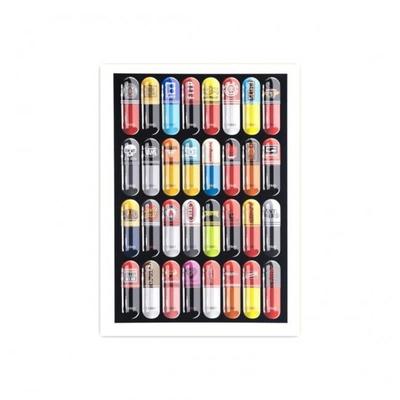
Artist: Denial Title: Pop Can - Pink Edition Type: 7-Color Screen Print on Fine Art Paper Size: 18 x 24 Inches Release: June 04, 2018 Run of: 40 ABOUT DENIAL: DENIAL is a Canadian artist whose work critiques consumerism and the human condition. Though based in Windsor Ontario, DENIAL spends much of the year traveling and exhibiting throughout Canada and USA, having done solo shows in Los Angeles, Chicago, Detroit, New York, Toronto and Vancouver. In 2000 he adopted the moniker DENIAL as a means of poking fun at advertising, politics and media messages that contemporary society is often "in denial" about. Since then he has maintained an ongoing global street-campaign of over 500, 000 stickers, placards and murals, using the alpha-numeric characters "D3N!@L". Intended as a conceptual means of marketing absurdism, DENIAL also challenges traditional notions of graffiti and public art through his bold and often satirical visual subversions. 77 / 776 -
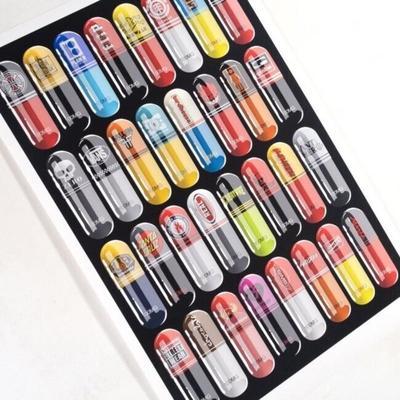
Artist: Denial Title: Pop Can - Pink Edition Type: 7-Color Screen Print on Fine Art Paper Size: 18 x 24 Inches Release: June 04, 2018 Run of: 40 ABOUT DENIAL: DENIAL is a Canadian artist whose work critiques consumerism and the human condition. Though based in Windsor Ontario, DENIAL spends much of the year traveling and exhibiting throughout Canada and USA, having done solo shows in Los Angeles, Chicago, Detroit, New York, Toronto and Vancouver. In 2000 he adopted the moniker DENIAL as a means of poking fun at advertising, politics and media messages that contemporary society is often "in denial" about. Since then he has maintained an ongoing global street-campaign of over 500, 000 stickers, placards and murals, using the alpha-numeric characters "D3N!@L". Intended as a conceptual means of marketing absurdism, DENIAL also challenges traditional notions of graffiti and public art through his bold and often satirical visual subversions. 78 / 776 -
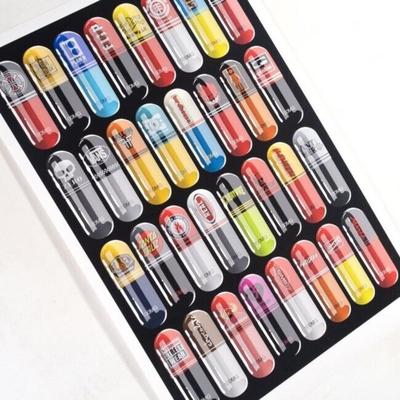
Artist: Denial Title: Pop Can - Pink Edition Type: 7-Color Screen Print on Fine Art Paper Size: 18 x 24 Inches Release: June 04, 2018 Run of: 40 ABOUT DENIAL: DENIAL is a Canadian artist whose work critiques consumerism and the human condition. Though based in Windsor Ontario, DENIAL spends much of the year traveling and exhibiting throughout Canada and USA, having done solo shows in Los Angeles, Chicago, Detroit, New York, Toronto and Vancouver. In 2000 he adopted the moniker DENIAL as a means of poking fun at advertising, politics and media messages that contemporary society is often "in denial" about. Since then he has maintained an ongoing global street-campaign of over 500, 000 stickers, placards and murals, using the alpha-numeric characters "D3N!@L". Intended as a conceptual means of marketing absurdism, DENIAL also challenges traditional notions of graffiti and public art through his bold and often satirical visual subversions. 79 / 776 -
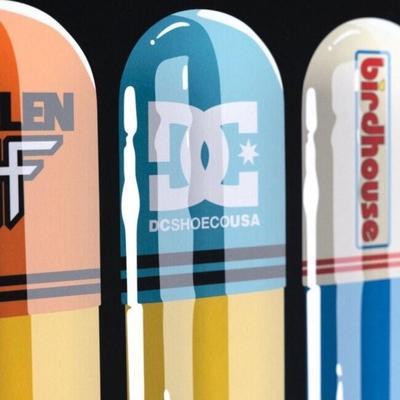
Artist: Denial Title: Pop Can - Pink Edition Type: 7-Color Screen Print on Fine Art Paper Size: 18 x 24 Inches Release: June 04, 2018 Run of: 40 ABOUT DENIAL: DENIAL is a Canadian artist whose work critiques consumerism and the human condition. Though based in Windsor Ontario, DENIAL spends much of the year traveling and exhibiting throughout Canada and USA, having done solo shows in Los Angeles, Chicago, Detroit, New York, Toronto and Vancouver. In 2000 he adopted the moniker DENIAL as a means of poking fun at advertising, politics and media messages that contemporary society is often "in denial" about. Since then he has maintained an ongoing global street-campaign of over 500, 000 stickers, placards and murals, using the alpha-numeric characters "D3N!@L". Intended as a conceptual means of marketing absurdism, DENIAL also challenges traditional notions of graffiti and public art through his bold and often satirical visual subversions. 80 / 776 -
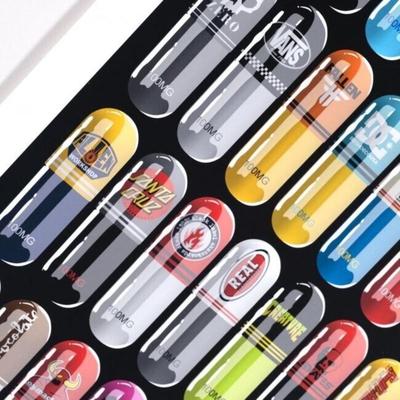
Artist: Denial Title: Pop Can - Pink Edition Type: 7-Color Screen Print on Fine Art Paper Size: 18 x 24 Inches Release: June 04, 2018 Run of: 40 ABOUT DENIAL: DENIAL is a Canadian artist whose work critiques consumerism and the human condition. Though based in Windsor Ontario, DENIAL spends much of the year traveling and exhibiting throughout Canada and USA, having done solo shows in Los Angeles, Chicago, Detroit, New York, Toronto and Vancouver. In 2000 he adopted the moniker DENIAL as a means of poking fun at advertising, politics and media messages that contemporary society is often "in denial" about. Since then he has maintained an ongoing global street-campaign of over 500, 000 stickers, placards and murals, using the alpha-numeric characters "D3N!@L". Intended as a conceptual means of marketing absurdism, DENIAL also challenges traditional notions of graffiti and public art through his bold and often satirical visual subversions. 81 / 776 -
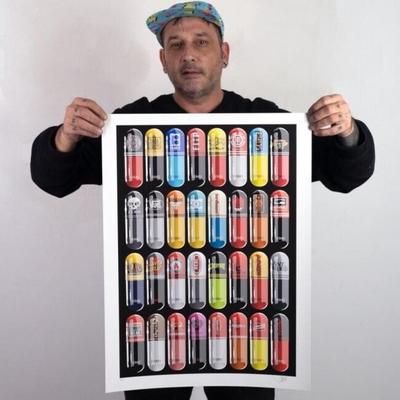
Artist: Denial Title: Pop Can - Pink Edition Type: 7-Color Screen Print on Fine Art Paper Size: 18 x 24 Inches Release: June 04, 2018 Run of: 40 ABOUT DENIAL: DENIAL is a Canadian artist whose work critiques consumerism and the human condition. Though based in Windsor Ontario, DENIAL spends much of the year traveling and exhibiting throughout Canada and USA, having done solo shows in Los Angeles, Chicago, Detroit, New York, Toronto and Vancouver. In 2000 he adopted the moniker DENIAL as a means of poking fun at advertising, politics and media messages that contemporary society is often "in denial" about. Since then he has maintained an ongoing global street-campaign of over 500, 000 stickers, placards and murals, using the alpha-numeric characters "D3N!@L". Intended as a conceptual means of marketing absurdism, DENIAL also challenges traditional notions of graffiti and public art through his bold and often satirical visual subversions. 82 / 776 -

Artist: Denial Title: Pop Can - Pink Edition Type: 7-Color Screen Print on Fine Art Paper Size: 18 x 24 Inches Release: June 04, 2018 Run of: 40 ABOUT DENIAL: DENIAL is a Canadian artist whose work critiques consumerism and the human condition. Though based in Windsor Ontario, DENIAL spends much of the year traveling and exhibiting throughout Canada and USA, having done solo shows in Los Angeles, Chicago, Detroit, New York, Toronto and Vancouver. In 2000 he adopted the moniker DENIAL as a means of poking fun at advertising, politics and media messages that contemporary society is often "in denial" about. Since then he has maintained an ongoing global street-campaign of over 500, 000 stickers, placards and murals, using the alpha-numeric characters "D3N!@L". Intended as a conceptual means of marketing absurdism, DENIAL also challenges traditional notions of graffiti and public art through his bold and often satirical visual subversions. 83 / 776 -
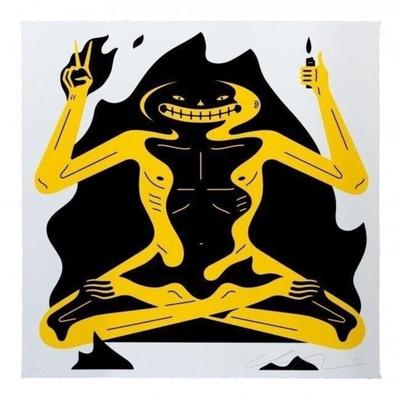
Artist: Cleon Peterson Burnout (White) Hand-pulled 16 x 16 Inches Black and Yellow screen print. Printed on 290gsm Arches Rag paper with deckled edges. Each print is signed and numbered. Limited edition of 100. Sold out immediately. Cleon Peterson is an LA based artist whose chaotic and violent paintings show clashing figures symbolizing a struggle between power and submission in the fluctuating architecture of contemporary society. 84 / 776 -
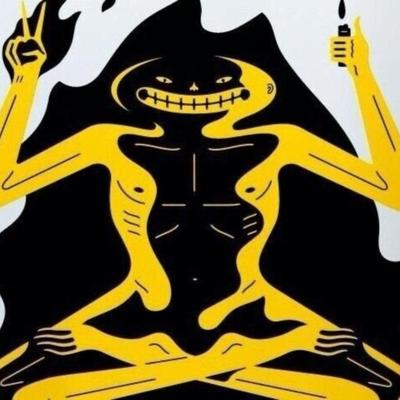
Artist: Cleon Peterson Burnout (White) Hand-pulled 16 x 16 Inches Black and Yellow screen print. Printed on 290gsm Arches Rag paper with deckled edges. Each print is signed and numbered. Limited edition of 100. Sold out immediately. Cleon Peterson is an LA based artist whose chaotic and violent paintings show clashing figures symbolizing a struggle between power and submission in the fluctuating architecture of contemporary society. 85 / 776 -
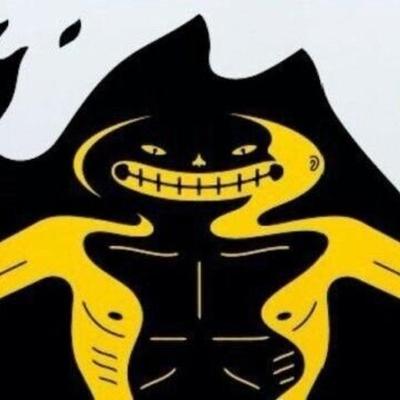
Artist: Cleon Peterson Burnout (White) Hand-pulled 16 x 16 Inches Black and Yellow screen print. Printed on 290gsm Arches Rag paper with deckled edges. Each print is signed and numbered. Limited edition of 100. Sold out immediately. Cleon Peterson is an LA based artist whose chaotic and violent paintings show clashing figures symbolizing a struggle between power and submission in the fluctuating architecture of contemporary society. 86 / 776 -
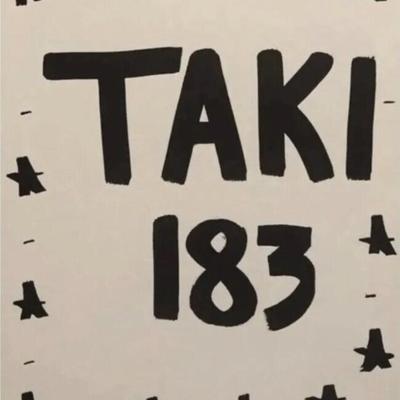
Taki 183 (1954) - Untitled Acrylic on canvas - Hand signed - 2018 Original. 1/1. SIZE: 11 " x 14 " inches TAKI 183 THE MAN WHO CREATED THE NYC GRAFFITI CULTURE! Graffiti writers and street artists around the world know the name that started it all: TAKI 183. A kid from 183rd Street in Washington Heights in northern Manhattan, TAKI's simple signature captured the attention of a reporter and, in the summer of 1971, an article appeared in The New York Times. TAKI was the first New Yorker to become famous for writing graffiti. The floodgates opened. In the summer of 1969, Demetrius was bored. He lived uptown, north of Harlem, in a neighborhood full of Greek kids, like himself, and also a growing population of Cubans, Dominicans and Puerto Ricans. The Savage Nomads gang was headquartered a block away, but they didn't bother the locals. One afternoon that summer, Demetrius' friend Phil wandered down to 183rd and had some news for Demetrius and his friend Greg. A kid in Inwood, 20 blocks north, was writing his name and street number: JULIO 204. Demetrius and Greg thought that was pretty cool. They all started to write their names. Demetrius wrote 'TAKI,' a diminutive for a number of Greek names, and his street number. In the fall of 1970, TAKI went to high school in Midtown Manhattan, taking the 1 train down and back. Along the way, he wrote TAKI 183 on the subway stations and anywhere else he thought was a good spot. He had seen the election posters and stickers plastered around the city in 1968, and again in 1970, and emulated their campaign tactics. When he started working as a delivery boy in midtown, running packages of high-end cosmetics to fancy places like the Upper East Side, he held the box up against light poles, using it as cover while he wrote his name. It was probably one of these tags on the Upper East Side that caught the eye of the New York Times reporter, who tracked TAKI down near his home. On July 21, 1971, TAKI's fate was sealed: "TAKI 183 Spawns Pen Pals," read the headline of the Times article. Just like that, TAKI 183 became the father of contemporary graffiti. His legend grew, and rumors spread that TAKI even tagged a Secret Service car and the Statue of Liberty. 94 / 776 -
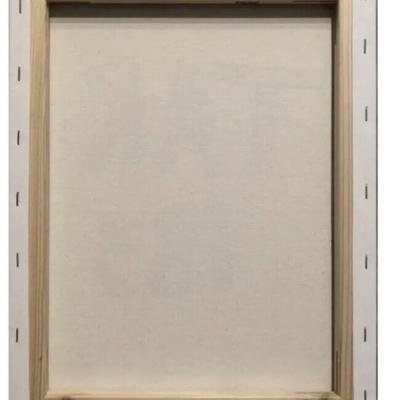
Taki 183 (1954) - Untitled Acrylic on canvas - Hand signed - 2018 Original. 1/1. SIZE: 11 " x 14 " inches TAKI 183 THE MAN WHO CREATED THE NYC GRAFFITI CULTURE! Graffiti writers and street artists around the world know the name that started it all: TAKI 183. A kid from 183rd Street in Washington Heights in northern Manhattan, TAKI's simple signature captured the attention of a reporter and, in the summer of 1971, an article appeared in The New York Times. TAKI was the first New Yorker to become famous for writing graffiti. The floodgates opened. In the summer of 1969, Demetrius was bored. He lived uptown, north of Harlem, in a neighborhood full of Greek kids, like himself, and also a growing population of Cubans, Dominicans and Puerto Ricans. The Savage Nomads gang was headquartered a block away, but they didn't bother the locals. One afternoon that summer, Demetrius' friend Phil wandered down to 183rd and had some news for Demetrius and his friend Greg. A kid in Inwood, 20 blocks north, was writing his name and street number: JULIO 204. Demetrius and Greg thought that was pretty cool. They all started to write their names. Demetrius wrote 'TAKI,' a diminutive for a number of Greek names, and his street number. In the fall of 1970, TAKI went to high school in Midtown Manhattan, taking the 1 train down and back. Along the way, he wrote TAKI 183 on the subway stations and anywhere else he thought was a good spot. He had seen the election posters and stickers plastered around the city in 1968, and again in 1970, and emulated their campaign tactics. When he started working as a delivery boy in midtown, running packages of high-end cosmetics to fancy places like the Upper East Side, he held the box up against light poles, using it as cover while he wrote his name. It was probably one of these tags on the Upper East Side that caught the eye of the New York Times reporter, who tracked TAKI down near his home. On July 21, 1971, TAKI's fate was sealed: "TAKI 183 Spawns Pen Pals," read the headline of the Times article. Just like that, TAKI 183 became the father of contemporary graffiti. His legend grew, and rumors spread that TAKI even tagged a Secret Service car and the Statue of Liberty. 95 / 776 -

Taki 183 (1954) - Untitled Acrylic on canvas - Hand signed - 2018 Original. 1/1. SIZE: 11 " x 14 " inches TAKI 183 THE MAN WHO CREATED THE NYC GRAFFITI CULTURE! Graffiti writers and street artists around the world know the name that started it all: TAKI 183. A kid from 183rd Street in Washington Heights in northern Manhattan, TAKI's simple signature captured the attention of a reporter and, in the summer of 1971, an article appeared in The New York Times. TAKI was the first New Yorker to become famous for writing graffiti. The floodgates opened. In the summer of 1969, Demetrius was bored. He lived uptown, north of Harlem, in a neighborhood full of Greek kids, like himself, and also a growing population of Cubans, Dominicans and Puerto Ricans. The Savage Nomads gang was headquartered a block away, but they didn't bother the locals. One afternoon that summer, Demetrius' friend Phil wandered down to 183rd and had some news for Demetrius and his friend Greg. A kid in Inwood, 20 blocks north, was writing his name and street number: JULIO 204. Demetrius and Greg thought that was pretty cool. They all started to write their names. Demetrius wrote 'TAKI,' a diminutive for a number of Greek names, and his street number. In the fall of 1970, TAKI went to high school in Midtown Manhattan, taking the 1 train down and back. Along the way, he wrote TAKI 183 on the subway stations and anywhere else he thought was a good spot. He had seen the election posters and stickers plastered around the city in 1968, and again in 1970, and emulated their campaign tactics. When he started working as a delivery boy in midtown, running packages of high-end cosmetics to fancy places like the Upper East Side, he held the box up against light poles, using it as cover while he wrote his name. It was probably one of these tags on the Upper East Side that caught the eye of the New York Times reporter, who tracked TAKI down near his home. On July 21, 1971, TAKI's fate was sealed: "TAKI 183 Spawns Pen Pals," read the headline of the Times article. Just like that, TAKI 183 became the father of contemporary graffiti. His legend grew, and rumors spread that TAKI even tagged a Secret Service car and the Statue of Liberty. 96 / 776 -
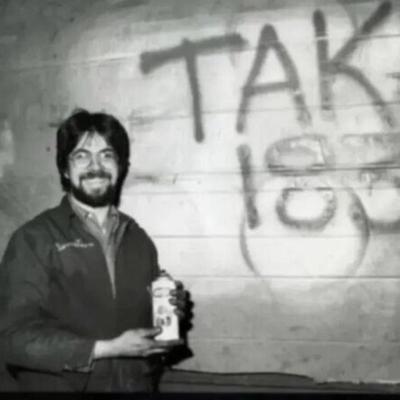
Taki 183 (1954) - Untitled Acrylic on canvas - Hand signed - 2018 Original. 1/1. SIZE: 11 " x 14 " inches TAKI 183 THE MAN WHO CREATED THE NYC GRAFFITI CULTURE! Graffiti writers and street artists around the world know the name that started it all: TAKI 183. A kid from 183rd Street in Washington Heights in northern Manhattan, TAKI's simple signature captured the attention of a reporter and, in the summer of 1971, an article appeared in The New York Times. TAKI was the first New Yorker to become famous for writing graffiti. The floodgates opened. In the summer of 1969, Demetrius was bored. He lived uptown, north of Harlem, in a neighborhood full of Greek kids, like himself, and also a growing population of Cubans, Dominicans and Puerto Ricans. The Savage Nomads gang was headquartered a block away, but they didn't bother the locals. One afternoon that summer, Demetrius' friend Phil wandered down to 183rd and had some news for Demetrius and his friend Greg. A kid in Inwood, 20 blocks north, was writing his name and street number: JULIO 204. Demetrius and Greg thought that was pretty cool. They all started to write their names. Demetrius wrote 'TAKI,' a diminutive for a number of Greek names, and his street number. In the fall of 1970, TAKI went to high school in Midtown Manhattan, taking the 1 train down and back. Along the way, he wrote TAKI 183 on the subway stations and anywhere else he thought was a good spot. He had seen the election posters and stickers plastered around the city in 1968, and again in 1970, and emulated their campaign tactics. When he started working as a delivery boy in midtown, running packages of high-end cosmetics to fancy places like the Upper East Side, he held the box up against light poles, using it as cover while he wrote his name. It was probably one of these tags on the Upper East Side that caught the eye of the New York Times reporter, who tracked TAKI down near his home. On July 21, 1971, TAKI's fate was sealed: "TAKI 183 Spawns Pen Pals," read the headline of the Times article. Just like that, TAKI 183 became the father of contemporary graffiti. His legend grew, and rumors spread that TAKI even tagged a Secret Service car and the Statue of Liberty. 97 / 776 -
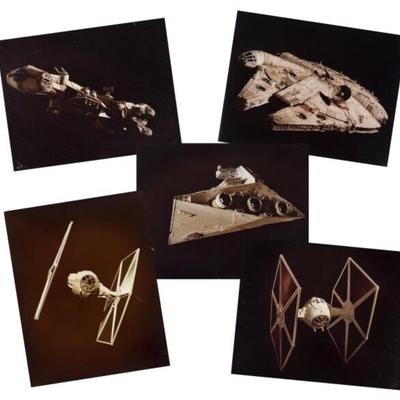
A set of nine 16x20 full-color original prints featuring photos of models used in Star Wars (20th Century Fox, 1977), photographed by Jack Warford on set during the production of the film. Warford, a Magnum photographer, was hired by George Mather and Gary Kurtz to photograph all of the principal starship models on set during the production of the film and was given permission to make prints of his work. All photography was done by Warford with his 4x5 Linhoff camera, and the prints have been in dark storage since 1977. Some of his work was used in marketing, promotion, and on merchandise with the release of the original film, and some have never before been published.

This lot is for a set of 9 full-color original prints from the estate of Jack Warford, photographer Prints (all 16x20) include one Millennium Falcon, one Blockade Runner, three X-Wing Fighter, one Star Destroyer pursuing Blockage Runner, one Y-Wing Fighter, and two Tie Fighter. This collection of photography come from The Estate of Jack Warford (10/27/1932 - 04/25/2018), who lead a successful fine art photography career in Hollywood with his wife Sue (both Magnum photographers). Warford had made a mark on Star Wars (20th Century Fox, 1977) with his stunning photography work, shooting the iconic starship models on set and during production with his 4x5 Linhoff camera for Gary Kurtz. Some of his work would be very familiar to fans, as it appeared in some of the mass marketing of toys and books for the original film. However, his story has never been told and credit for his work is unknown to the masses. In preface of his work that is part of this auction, we have provided Mr. Warford an opportunity to share his story with fans, which has never been published before, in his own words. When The Force Was With Me By Jack Warford George Mather was a good friend of mine. He was a general, all-around film person who belonged to Screen Actor's Guild and the Directors Guild, was occasionally a non-union cinematographer and usually had his fingers in more pies than Little Jack Horner. When he needed a photographer, he called me, whether it was to shoot a casting portfolio of his current girlfriend, and he had a lot of those, or to do working portraits of all the staff members of an entire studio. On one particular occasion, he called to see if I would be free on a certain Sunday in 1977 to take some pictures of some models. I had photographed many models for their portfolios, for ads, and I was a staff photographer for the short-lived fashion magazine, California Girl, so I said Sure. He told me to call Gary Kurtz, the producer of this picture he was working on for details. I did. It seems that the models in question were not the breathing, posing, photogenic female kind, but models of space ships for a science fiction movie shooting at this rented barn near the Van Nuys Airport that had been dubbed Industrial Light and Magic. The pictures were to be for publicity and promotion. I calculated a price for that and agreed at five hundred for the afternoon. When I arrived at the studio, accompanied by my wife, Sue, and my next door neighbors, Tom and Peggy Marks, who had been invited to come and watch by George, we were given coffee and the grand tour of the works in progress by John Dykstra, the special photographic effects supervisor. The model makers had been having such a wonderful time building the space ships that they had fallen behind in production and schedule and were over budget. When George was hired as production manager and whip cracker, only one shot had been completed, the shot of the pod with C3PO and R2D2 (named for a roll of magnetic tape, roll 2, dialog 2) blasting down to the planet below from the blockade runner. The part of the movie with the live action had been completed months before and the actors had all gone home. The Millennium Falcon that had served for a set in England for the actors, only showing a quarter of the whole ship, had cost less than a third of the three foot diameter model used by Industrial Light and Magic, henceforth referred to as ILM, for the full-body shots in action. On the day we arrived, they had just finished what turned out to be the opening shot of the movie. The three-foot long model of the Imperial Cruiser was upside down on a plexiglass pedestal with a blue neon light inside chasing a two inch model of the blockade runner. For the reverse shots of the blockade runner, carrying Princess Leah and the two droids, they used the largest model they made, being over six feet long. In some photographic processes, called Blue Screen, blue will disappear, and it is easy to strip in another piece of film. It goes back to the dawn of movies, in The Great Train Robbery when the train comes rolling by the open window in the telegraph office. If you cover an actor's face and hands in blue, presto, the invisible man. It explains why newscasters can never wear blue shirts. John showed me the setup of the shot they had just taken. The camera was mounted on a dolly running on railroad tracks beside the models and the wide angle lens was only a couple inches above the model as the computer oozed it by very slowly. Nearby was a monitor. He turned it on. The picture was in black and white negative, inverted so you were looking at it from underneath instead of above. The tiny blockade runner flashed across the screen and then the imperial cruiser came by. It kept coming. It still kept coming until it passed by and the engines were visible I was completely blown away. You just got my three bucks, (the cost of a movie ticket then) I said. In most, if not all, of the shots of the ships, it was the camera that moved in a predetermined path, operated by instructions from a computer, not the ships. Backgrounds would be added later along with the blasts from the engines. ILM had made a deal with a Japanese model maker to send them all the rejects of their model cars or whatever. For example, where the mandibles or jaws of the Millennium Falcon join the main body between the upper and lower plates, you can see the oil pan and transmission of a model Mercedes Benz. The sprues that held the plastic parts together during the casting were put to work as piping. The model makers at ILM had a wonderful time playing, as evidenced by the missing plate on the Millennium falcon with a skeleton curled up inside that no one would ever see - one of the reasons George Mather was called in as expediter. It was time to go to work. Gary Kurtz showed me the different models he wanted shot - the Millennium Falcon, several different X-wing fighters, some Y-wing fighters, the set up shot with the tiny blockade runner and the Imperial Cruiser, the full size blockade runner, used in reverse shots of the interception, which was the largest model they had made, being over six feet long, and some surface shots of various scales of the surface of the Death Star to use as backgrounds. Whatever lighting I needed would be provided. Since this was supposed to be outer space where there is no atmosphere to diffuse the light, I used one large floodlight for a single source with no fill, as if the model were lit by a nearby star. I set up my Linhoff 4 X 5 camera, using a six-inch Golden Dagor lens, about as fine a photographic setup as is available. After setting up each shot as if the ships were in action, not merely static models, I called in Gary to take a look at the lighting and setup before I tripped the shutter. One shot I was particularly proud of was of an X-wing fighter, front on with one laser on a wingtip pointed right at the camera. This shot was the one that wound up on lunch buckets, game box covers, and t-shirts as well as publicity shots and posters and may have been the most published photograph of 1977. An animated copy showed up in the Star Wars computer game. The next day, I took the Ektacolor negatives to Spectra Color Lab in Burbank. My wife and I were going out of town on a shoot, so we arranged to have the negs and the contact proofs picked up. Upon our return, I called George. He said he was appalled I rushed to his office to take a look and some of the shots had blue flashes on them, something I had never seen before. I found out this was caused by the high degree of static electricity at the studio that made sparks when the dark slides were pulled out of the film holders. I called Gary Kurtz, apologizing and offering to do a reshoot. He said the pictures were just fine and since the images would be stripped out and stuck on starfield or Death Star backgrounds, there would be no problems since most of the flashes were not on the ships bodies and the others could easily be taken out. I asked Gary Kurtz if I could borrow the negatives and make some prints With Gary's blessing, I made several copies of each of what I considered to be the best shots, mostly in 16 X 20 with a few 8 X 10s. It would be awhile before I heard from Lucasfilm again. And then when I did it was an invitation to the cast and crew screening of Star Wars, not THE Star Wars as it was under the shooting title, at the Directors Guild Theater on Wilshire Boulevard, lunch to follow at Dr. Munchie's. George and Marcia Lucas had just finished editing the film, and no one else had seen so much as a working print. It was not Episode IV, A New Hope, but just Star Wars. There was no scene between Han Solo and Jabba the Hut; that would be added later. There was a burst of applause from the cast and crew on the opening shot that I described, another when the modified elephants made up like bantas appeared and when the stars took on a Doppler effect as the Millennium Falcon jumped into faster than light speed. When the lights came on, it was plain that the audience was more than pleased with what they had done, Almost everyone, that is. The feeling was jubilant, Mark Hamil was surrounded by a heard of friends and relatives, but as the theater emptied, Harrison Ford, shoulders hunched, hands in pockets, staring at the floor in front of him, slouched down the aisle very much the loner wearing a cloud of gloom. Wearing our May the Force Be With You buttons that had been passed out as we walked in, we proceeded to Dr. Munchies where we were adequately wined and dined. After eating, Sue and I were sitting on some steps talking to John Dykstra when Harrison Ford ambled up, still wearing his dark cloud. He had enjoyed maybe one too many glasses of wine. I asked him why he was so depressed. He replied that he hadn't worked as a actor in nine months since the live action was finished and he didn't know if he would ever work again. We all tried to cheer him up in vain. He was convinced this was the bottom point in his life and his career. We all know he did work again, quite a few times and the world may have gained a movie star, but it lost a wonderful carpenter. A few days later the film opened and was an immediate smash hit. My pictures, uncredited, were splashed all over Time magazine that called it The best film of the year. The edition of Newsweek put the first thorns in my side, when my pictures were credited to Richard Edlund, the special effects cinematographer.I wrote a letter to Gary Kurtz suggesting that I put out a special edition of signed and numbered photographs I heard from Lucasfilm asking if I thought they should get a slice of the pie, to which I agreed, and I later heard from Fox that I should forget the whole idea. At least I had the prints I had made for myself. Another thorn appeared when I found my photographs used on lunch buckets, t-shirts, and games, and all sorts of ancillary items going along with the movie. Another was to see a set of three fighters made from the same image with that tell-tale electric blue splash on their sides advertising Nikkor lenses. The original agreement was for publicity and promotion and this was going way beyond that. Star Wars may have been shot with Nikkor lenses, but the illustration was not. I called Gary Kurtz to complain. I was informed that everyone who worked for ILM was an employee whether for one day or the whole run and the product of their labors with all rights was the property of Lucasfilm/Twentieth Century Fox. Oh, yeah? If I was an employee instead of an independent contractor, where was my W-2 form? It was time to call a lawyer. It would seem that according to copyright laws, while the image may belong to the creator, the rendering belongs to the photographer. In the course of the lawsuit amidst depositions, questions and answers, there were some numbers discovered on the edge of the negatives. No one had the faintest idea what they were for. Richard Edllund excluded the photos of the surface of the Death Star and such as had blue static electricity streaks and claimed all the rest as his. My attorney was not an intellectual properties lawyer and did not cut me the best settlement. While the financial settlement was about what I would have been paid if I had collected what I should have plus the lawyer's cut, the credits went to Richard Edlund and all rights went to Lucasfillm/Twentieth Century Fox. A man who became one of my closest friends and was an intellectual properties lawyer and he claims he would have cut a much more attractive deal, that would have included penalties for copyright violation. We did eventually discover the reason for the numbers on the edge of the negatives, they were placed there by the photo lab that processed them in the first place. Those numbers were on the photos Edlund conceded were mine. They were also on the rest of the photos I claimed as mine and Edlund claimed as his, proving rather conclusively that they were mine, but that is not part of the official settlement. So, I had the money, but no credits and no rights. I did, however, have the prints I had made with Gary Kurtz blessing. I gave a few away and the rest lay in an Ektacolor paper box for the next thirty three years. Jack Warford 98 / 776 -

A set of nine 16x20 full-color original prints featuring photos of models used in Star Wars (20th Century Fox, 1977), photographed by Jack Warford on set during the production of the film. Warford, a Magnum photographer, was hired by George Mather and Gary Kurtz to photograph all of the principal starship models on set during the production of the film and was given permission to make prints of his work. All photography was done by Warford with his 4x5 Linhoff camera, and the prints have been in dark storage since 1977. Some of his work was used in marketing, promotion, and on merchandise with the release of the original film, and some have never before been published.

This lot is for a set of 9 full-color original prints from the estate of Jack Warford, photographer Prints (all 16x20) include one Millennium Falcon, one Blockade Runner, three X-Wing Fighter, one Star Destroyer pursuing Blockage Runner, one Y-Wing Fighter, and two Tie Fighter. This collection of photography come from The Estate of Jack Warford (10/27/1932 - 04/25/2018), who lead a successful fine art photography career in Hollywood with his wife Sue (both Magnum photographers). Warford had made a mark on Star Wars (20th Century Fox, 1977) with his stunning photography work, shooting the iconic starship models on set and during production with his 4x5 Linhoff camera for Gary Kurtz. Some of his work would be very familiar to fans, as it appeared in some of the mass marketing of toys and books for the original film. However, his story has never been told and credit for his work is unknown to the masses. In preface of his work that is part of this auction, we have provided Mr. Warford an opportunity to share his story with fans, which has never been published before, in his own words. When The Force Was With Me By Jack Warford George Mather was a good friend of mine. He was a general, all-around film person who belonged to Screen Actor's Guild and the Directors Guild, was occasionally a non-union cinematographer and usually had his fingers in more pies than Little Jack Horner. When he needed a photographer, he called me, whether it was to shoot a casting portfolio of his current girlfriend, and he had a lot of those, or to do working portraits of all the staff members of an entire studio. On one particular occasion, he called to see if I would be free on a certain Sunday in 1977 to take some pictures of some models. I had photographed many models for their portfolios, for ads, and I was a staff photographer for the short-lived fashion magazine, California Girl, so I said Sure. He told me to call Gary Kurtz, the producer of this picture he was working on for details. I did. It seems that the models in question were not the breathing, posing, photogenic female kind, but models of space ships for a science fiction movie shooting at this rented barn near the Van Nuys Airport that had been dubbed Industrial Light and Magic. The pictures were to be for publicity and promotion. I calculated a price for that and agreed at five hundred for the afternoon. When I arrived at the studio, accompanied by my wife, Sue, and my next door neighbors, Tom and Peggy Marks, who had been invited to come and watch by George, we were given coffee and the grand tour of the works in progress by John Dykstra, the special photographic effects supervisor. The model makers had been having such a wonderful time building the space ships that they had fallen behind in production and schedule and were over budget. When George was hired as production manager and whip cracker, only one shot had been completed, the shot of the pod with C3PO and R2D2 (named for a roll of magnetic tape, roll 2, dialog 2) blasting down to the planet below from the blockade runner. The part of the movie with the live action had been completed months before and the actors had all gone home. The Millennium Falcon that had served for a set in England for the actors, only showing a quarter of the whole ship, had cost less than a third of the three foot diameter model used by Industrial Light and Magic, henceforth referred to as ILM, for the full-body shots in action. On the day we arrived, they had just finished what turned out to be the opening shot of the movie. The three-foot long model of the Imperial Cruiser was upside down on a plexiglass pedestal with a blue neon light inside chasing a two inch model of the blockade runner. For the reverse shots of the blockade runner, carrying Princess Leah and the two droids, they used the largest model they made, being over six feet long. In some photographic processes, called Blue Screen, blue will disappear, and it is easy to strip in another piece of film. It goes back to the dawn of movies, in The Great Train Robbery when the train comes rolling by the open window in the telegraph office. If you cover an actor's face and hands in blue, presto, the invisible man. It explains why newscasters can never wear blue shirts. John showed me the setup of the shot they had just taken. The camera was mounted on a dolly running on railroad tracks beside the models and the wide angle lens was only a couple inches above the model as the computer oozed it by very slowly. Nearby was a monitor. He turned it on. The picture was in black and white negative, inverted so you were looking at it from underneath instead of above. The tiny blockade runner flashed across the screen and then the imperial cruiser came by. It kept coming. It still kept coming until it passed by and the engines were visible I was completely blown away. You just got my three bucks, (the cost of a movie ticket then) I said. In most, if not all, of the shots of the ships, it was the camera that moved in a predetermined path, operated by instructions from a computer, not the ships. Backgrounds would be added later along with the blasts from the engines. ILM had made a deal with a Japanese model maker to send them all the rejects of their model cars or whatever. For example, where the mandibles or jaws of the Millennium Falcon join the main body between the upper and lower plates, you can see the oil pan and transmission of a model Mercedes Benz. The sprues that held the plastic parts together during the casting were put to work as piping. The model makers at ILM had a wonderful time playing, as evidenced by the missing plate on the Millennium falcon with a skeleton curled up inside that no one would ever see - one of the reasons George Mather was called in as expediter. It was time to go to work. Gary Kurtz showed me the different models he wanted shot - the Millennium Falcon, several different X-wing fighters, some Y-wing fighters, the set up shot with the tiny blockade runner and the Imperial Cruiser, the full size blockade runner, used in reverse shots of the interception, which was the largest model they had made, being over six feet long, and some surface shots of various scales of the surface of the Death Star to use as backgrounds. Whatever lighting I needed would be provided. Since this was supposed to be outer space where there is no atmosphere to diffuse the light, I used one large floodlight for a single source with no fill, as if the model were lit by a nearby star. I set up my Linhoff 4 X 5 camera, using a six-inch Golden Dagor lens, about as fine a photographic setup as is available. After setting up each shot as if the ships were in action, not merely static models, I called in Gary to take a look at the lighting and setup before I tripped the shutter. One shot I was particularly proud of was of an X-wing fighter, front on with one laser on a wingtip pointed right at the camera. This shot was the one that wound up on lunch buckets, game box covers, and t-shirts as well as publicity shots and posters and may have been the most published photograph of 1977. An animated copy showed up in the Star Wars computer game. The next day, I took the Ektacolor negatives to Spectra Color Lab in Burbank. My wife and I were going out of town on a shoot, so we arranged to have the negs and the contact proofs picked up. Upon our return, I called George. He said he was appalled I rushed to his office to take a look and some of the shots had blue flashes on them, something I had never seen before. I found out this was caused by the high degree of static electricity at the studio that made sparks when the dark slides were pulled out of the film holders. I called Gary Kurtz, apologizing and offering to do a reshoot. He said the pictures were just fine and since the images would be stripped out and stuck on starfield or Death Star backgrounds, there would be no problems since most of the flashes were not on the ships bodies and the others could easily be taken out. I asked Gary Kurtz if I could borrow the negatives and make some prints With Gary's blessing, I made several copies of each of what I considered to be the best shots, mostly in 16 X 20 with a few 8 X 10s. It would be awhile before I heard from Lucasfilm again. And then when I did it was an invitation to the cast and crew screening of Star Wars, not THE Star Wars as it was under the shooting title, at the Directors Guild Theater on Wilshire Boulevard, lunch to follow at Dr. Munchie's. George and Marcia Lucas had just finished editing the film, and no one else had seen so much as a working print. It was not Episode IV, A New Hope, but just Star Wars. There was no scene between Han Solo and Jabba the Hut; that would be added later. There was a burst of applause from the cast and crew on the opening shot that I described, another when the modified elephants made up like bantas appeared and when the stars took on a Doppler effect as the Millennium Falcon jumped into faster than light speed. When the lights came on, it was plain that the audience was more than pleased with what they had done, Almost everyone, that is. The feeling was jubilant, Mark Hamil was surrounded by a heard of friends and relatives, but as the theater emptied, Harrison Ford, shoulders hunched, hands in pockets, staring at the floor in front of him, slouched down the aisle very much the loner wearing a cloud of gloom. Wearing our May the Force Be With You buttons that had been passed out as we walked in, we proceeded to Dr. Munchies where we were adequately wined and dined. After eating, Sue and I were sitting on some steps talking to John Dykstra when Harrison Ford ambled up, still wearing his dark cloud. He had enjoyed maybe one too many glasses of wine. I asked him why he was so depressed. He replied that he hadn't worked as a actor in nine months since the live action was finished and he didn't know if he would ever work again. We all tried to cheer him up in vain. He was convinced this was the bottom point in his life and his career. We all know he did work again, quite a few times and the world may have gained a movie star, but it lost a wonderful carpenter. A few days later the film opened and was an immediate smash hit. My pictures, uncredited, were splashed all over Time magazine that called it The best film of the year. The edition of Newsweek put the first thorns in my side, when my pictures were credited to Richard Edlund, the special effects cinematographer.I wrote a letter to Gary Kurtz suggesting that I put out a special edition of signed and numbered photographs I heard from Lucasfilm asking if I thought they should get a slice of the pie, to which I agreed, and I later heard from Fox that I should forget the whole idea. At least I had the prints I had made for myself. Another thorn appeared when I found my photographs used on lunch buckets, t-shirts, and games, and all sorts of ancillary items going along with the movie. Another was to see a set of three fighters made from the same image with that tell-tale electric blue splash on their sides advertising Nikkor lenses. The original agreement was for publicity and promotion and this was going way beyond that. Star Wars may have been shot with Nikkor lenses, but the illustration was not. I called Gary Kurtz to complain. I was informed that everyone who worked for ILM was an employee whether for one day or the whole run and the product of their labors with all rights was the property of Lucasfilm/Twentieth Century Fox. Oh, yeah? If I was an employee instead of an independent contractor, where was my W-2 form? It was time to call a lawyer. It would seem that according to copyright laws, while the image may belong to the creator, the rendering belongs to the photographer. In the course of the lawsuit amidst depositions, questions and answers, there were some numbers discovered on the edge of the negatives. No one had the faintest idea what they were for. Richard Edllund excluded the photos of the surface of the Death Star and such as had blue static electricity streaks and claimed all the rest as his. My attorney was not an intellectual properties lawyer and did not cut me the best settlement. While the financial settlement was about what I would have been paid if I had collected what I should have plus the lawyer's cut, the credits went to Richard Edlund and all rights went to Lucasfillm/Twentieth Century Fox. A man who became one of my closest friends and was an intellectual properties lawyer and he claims he would have cut a much more attractive deal, that would have included penalties for copyright violation. We did eventually discover the reason for the numbers on the edge of the negatives, they were placed there by the photo lab that processed them in the first place. Those numbers were on the photos Edlund conceded were mine. They were also on the rest of the photos I claimed as mine and Edlund claimed as his, proving rather conclusively that they were mine, but that is not part of the official settlement. So, I had the money, but no credits and no rights. I did, however, have the prints I had made with Gary Kurtz blessing. I gave a few away and the rest lay in an Ektacolor paper box for the next thirty three years. Jack Warford 99 / 776 -
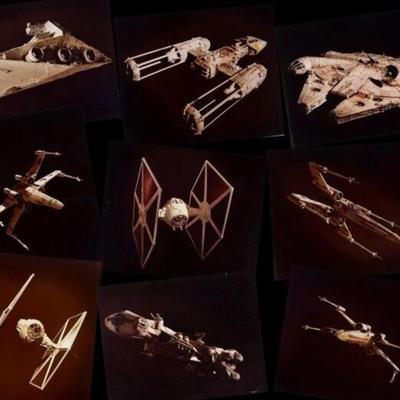
A set of nine 16x20 full-color original prints featuring photos of models used in Star Wars (20th Century Fox, 1977), photographed by Jack Warford on set during the production of the film. Warford, a Magnum photographer, was hired by George Mather and Gary Kurtz to photograph all of the principal starship models on set during the production of the film and was given permission to make prints of his work. All photography was done by Warford with his 4x5 Linhoff camera, and the prints have been in dark storage since 1977. Some of his work was used in marketing, promotion, and on merchandise with the release of the original film, and some have never before been published.

This lot is for a set of 9 full-color original prints from the estate of Jack Warford, photographer Prints (all 16x20) include one Millennium Falcon, one Blockade Runner, three X-Wing Fighter, one Star Destroyer pursuing Blockage Runner, one Y-Wing Fighter, and two Tie Fighter. This collection of photography come from The Estate of Jack Warford (10/27/1932 - 04/25/2018), who lead a successful fine art photography career in Hollywood with his wife Sue (both Magnum photographers). Warford had made a mark on Star Wars (20th Century Fox, 1977) with his stunning photography work, shooting the iconic starship models on set and during production with his 4x5 Linhoff camera for Gary Kurtz. Some of his work would be very familiar to fans, as it appeared in some of the mass marketing of toys and books for the original film. However, his story has never been told and credit for his work is unknown to the masses. In preface of his work that is part of this auction, we have provided Mr. Warford an opportunity to share his story with fans, which has never been published before, in his own words. When The Force Was With Me By Jack Warford George Mather was a good friend of mine. He was a general, all-around film person who belonged to Screen Actor's Guild and the Directors Guild, was occasionally a non-union cinematographer and usually had his fingers in more pies than Little Jack Horner. When he needed a photographer, he called me, whether it was to shoot a casting portfolio of his current girlfriend, and he had a lot of those, or to do working portraits of all the staff members of an entire studio. On one particular occasion, he called to see if I would be free on a certain Sunday in 1977 to take some pictures of some models. I had photographed many models for their portfolios, for ads, and I was a staff photographer for the short-lived fashion magazine, California Girl, so I said Sure. He told me to call Gary Kurtz, the producer of this picture he was working on for details. I did. It seems that the models in question were not the breathing, posing, photogenic female kind, but models of space ships for a science fiction movie shooting at this rented barn near the Van Nuys Airport that had been dubbed Industrial Light and Magic. The pictures were to be for publicity and promotion. I calculated a price for that and agreed at five hundred for the afternoon. When I arrived at the studio, accompanied by my wife, Sue, and my next door neighbors, Tom and Peggy Marks, who had been invited to come and watch by George, we were given coffee and the grand tour of the works in progress by John Dykstra, the special photographic effects supervisor. The model makers had been having such a wonderful time building the space ships that they had fallen behind in production and schedule and were over budget. When George was hired as production manager and whip cracker, only one shot had been completed, the shot of the pod with C3PO and R2D2 (named for a roll of magnetic tape, roll 2, dialog 2) blasting down to the planet below from the blockade runner. The part of the movie with the live action had been completed months before and the actors had all gone home. The Millennium Falcon that had served for a set in England for the actors, only showing a quarter of the whole ship, had cost less than a third of the three foot diameter model used by Industrial Light and Magic, henceforth referred to as ILM, for the full-body shots in action. On the day we arrived, they had just finished what turned out to be the opening shot of the movie. The three-foot long model of the Imperial Cruiser was upside down on a plexiglass pedestal with a blue neon light inside chasing a two inch model of the blockade runner. For the reverse shots of the blockade runner, carrying Princess Leah and the two droids, they used the largest model they made, being over six feet long. In some photographic processes, called Blue Screen, blue will disappear, and it is easy to strip in another piece of film. It goes back to the dawn of movies, in The Great Train Robbery when the train comes rolling by the open window in the telegraph office. If you cover an actor's face and hands in blue, presto, the invisible man. It explains why newscasters can never wear blue shirts. John showed me the setup of the shot they had just taken. The camera was mounted on a dolly running on railroad tracks beside the models and the wide angle lens was only a couple inches above the model as the computer oozed it by very slowly. Nearby was a monitor. He turned it on. The picture was in black and white negative, inverted so you were looking at it from underneath instead of above. The tiny blockade runner flashed across the screen and then the imperial cruiser came by. It kept coming. It still kept coming until it passed by and the engines were visible I was completely blown away. You just got my three bucks, (the cost of a movie ticket then) I said. In most, if not all, of the shots of the ships, it was the camera that moved in a predetermined path, operated by instructions from a computer, not the ships. Backgrounds would be added later along with the blasts from the engines. ILM had made a deal with a Japanese model maker to send them all the rejects of their model cars or whatever. For example, where the mandibles or jaws of the Millennium Falcon join the main body between the upper and lower plates, you can see the oil pan and transmission of a model Mercedes Benz. The sprues that held the plastic parts together during the casting were put to work as piping. The model makers at ILM had a wonderful time playing, as evidenced by the missing plate on the Millennium falcon with a skeleton curled up inside that no one would ever see - one of the reasons George Mather was called in as expediter. It was time to go to work. Gary Kurtz showed me the different models he wanted shot - the Millennium Falcon, several different X-wing fighters, some Y-wing fighters, the set up shot with the tiny blockade runner and the Imperial Cruiser, the full size blockade runner, used in reverse shots of the interception, which was the largest model they had made, being over six feet long, and some surface shots of various scales of the surface of the Death Star to use as backgrounds. Whatever lighting I needed would be provided. Since this was supposed to be outer space where there is no atmosphere to diffuse the light, I used one large floodlight for a single source with no fill, as if the model were lit by a nearby star. I set up my Linhoff 4 X 5 camera, using a six-inch Golden Dagor lens, about as fine a photographic setup as is available. After setting up each shot as if the ships were in action, not merely static models, I called in Gary to take a look at the lighting and setup before I tripped the shutter. One shot I was particularly proud of was of an X-wing fighter, front on with one laser on a wingtip pointed right at the camera. This shot was the one that wound up on lunch buckets, game box covers, and t-shirts as well as publicity shots and posters and may have been the most published photograph of 1977. An animated copy showed up in the Star Wars computer game. The next day, I took the Ektacolor negatives to Spectra Color Lab in Burbank. My wife and I were going out of town on a shoot, so we arranged to have the negs and the contact proofs picked up. Upon our return, I called George. He said he was appalled I rushed to his office to take a look and some of the shots had blue flashes on them, something I had never seen before. I found out this was caused by the high degree of static electricity at the studio that made sparks when the dark slides were pulled out of the film holders. I called Gary Kurtz, apologizing and offering to do a reshoot. He said the pictures were just fine and since the images would be stripped out and stuck on starfield or Death Star backgrounds, there would be no problems since most of the flashes were not on the ships bodies and the others could easily be taken out. I asked Gary Kurtz if I could borrow the negatives and make some prints With Gary's blessing, I made several copies of each of what I considered to be the best shots, mostly in 16 X 20 with a few 8 X 10s. It would be awhile before I heard from Lucasfilm again. And then when I did it was an invitation to the cast and crew screening of Star Wars, not THE Star Wars as it was under the shooting title, at the Directors Guild Theater on Wilshire Boulevard, lunch to follow at Dr. Munchie's. George and Marcia Lucas had just finished editing the film, and no one else had seen so much as a working print. It was not Episode IV, A New Hope, but just Star Wars. There was no scene between Han Solo and Jabba the Hut; that would be added later. There was a burst of applause from the cast and crew on the opening shot that I described, another when the modified elephants made up like bantas appeared and when the stars took on a Doppler effect as the Millennium Falcon jumped into faster than light speed. When the lights came on, it was plain that the audience was more than pleased with what they had done, Almost everyone, that is. The feeling was jubilant, Mark Hamil was surrounded by a heard of friends and relatives, but as the theater emptied, Harrison Ford, shoulders hunched, hands in pockets, staring at the floor in front of him, slouched down the aisle very much the loner wearing a cloud of gloom. Wearing our May the Force Be With You buttons that had been passed out as we walked in, we proceeded to Dr. Munchies where we were adequately wined and dined. After eating, Sue and I were sitting on some steps talking to John Dykstra when Harrison Ford ambled up, still wearing his dark cloud. He had enjoyed maybe one too many glasses of wine. I asked him why he was so depressed. He replied that he hadn't worked as a actor in nine months since the live action was finished and he didn't know if he would ever work again. We all tried to cheer him up in vain. He was convinced this was the bottom point in his life and his career. We all know he did work again, quite a few times and the world may have gained a movie star, but it lost a wonderful carpenter. A few days later the film opened and was an immediate smash hit. My pictures, uncredited, were splashed all over Time magazine that called it The best film of the year. The edition of Newsweek put the first thorns in my side, when my pictures were credited to Richard Edlund, the special effects cinematographer.I wrote a letter to Gary Kurtz suggesting that I put out a special edition of signed and numbered photographs I heard from Lucasfilm asking if I thought they should get a slice of the pie, to which I agreed, and I later heard from Fox that I should forget the whole idea. At least I had the prints I had made for myself. Another thorn appeared when I found my photographs used on lunch buckets, t-shirts, and games, and all sorts of ancillary items going along with the movie. Another was to see a set of three fighters made from the same image with that tell-tale electric blue splash on their sides advertising Nikkor lenses. The original agreement was for publicity and promotion and this was going way beyond that. Star Wars may have been shot with Nikkor lenses, but the illustration was not. I called Gary Kurtz to complain. I was informed that everyone who worked for ILM was an employee whether for one day or the whole run and the product of their labors with all rights was the property of Lucasfilm/Twentieth Century Fox. Oh, yeah? If I was an employee instead of an independent contractor, where was my W-2 form? It was time to call a lawyer. It would seem that according to copyright laws, while the image may belong to the creator, the rendering belongs to the photographer. In the course of the lawsuit amidst depositions, questions and answers, there were some numbers discovered on the edge of the negatives. No one had the faintest idea what they were for. Richard Edllund excluded the photos of the surface of the Death Star and such as had blue static electricity streaks and claimed all the rest as his. My attorney was not an intellectual properties lawyer and did not cut me the best settlement. While the financial settlement was about what I would have been paid if I had collected what I should have plus the lawyer's cut, the credits went to Richard Edlund and all rights went to Lucasfillm/Twentieth Century Fox. A man who became one of my closest friends and was an intellectual properties lawyer and he claims he would have cut a much more attractive deal, that would have included penalties for copyright violation. We did eventually discover the reason for the numbers on the edge of the negatives, they were placed there by the photo lab that processed them in the first place. Those numbers were on the photos Edlund conceded were mine. They were also on the rest of the photos I claimed as mine and Edlund claimed as his, proving rather conclusively that they were mine, but that is not part of the official settlement. So, I had the money, but no credits and no rights. I did, however, have the prints I had made with Gary Kurtz blessing. I gave a few away and the rest lay in an Ektacolor paper box for the next thirty three years. Jack Warford 100 / 776
Photos 1 - 100 of 776
Per page:
